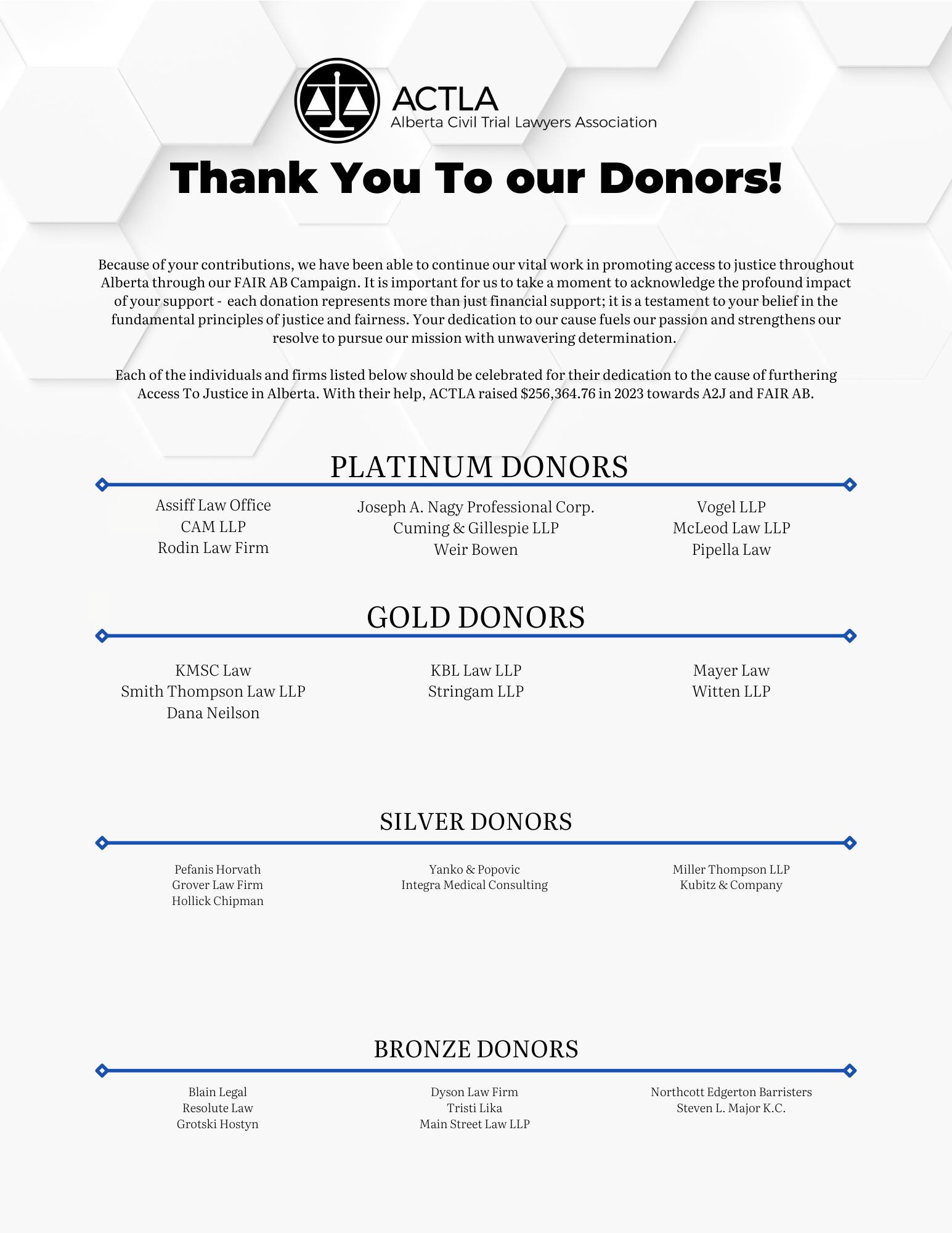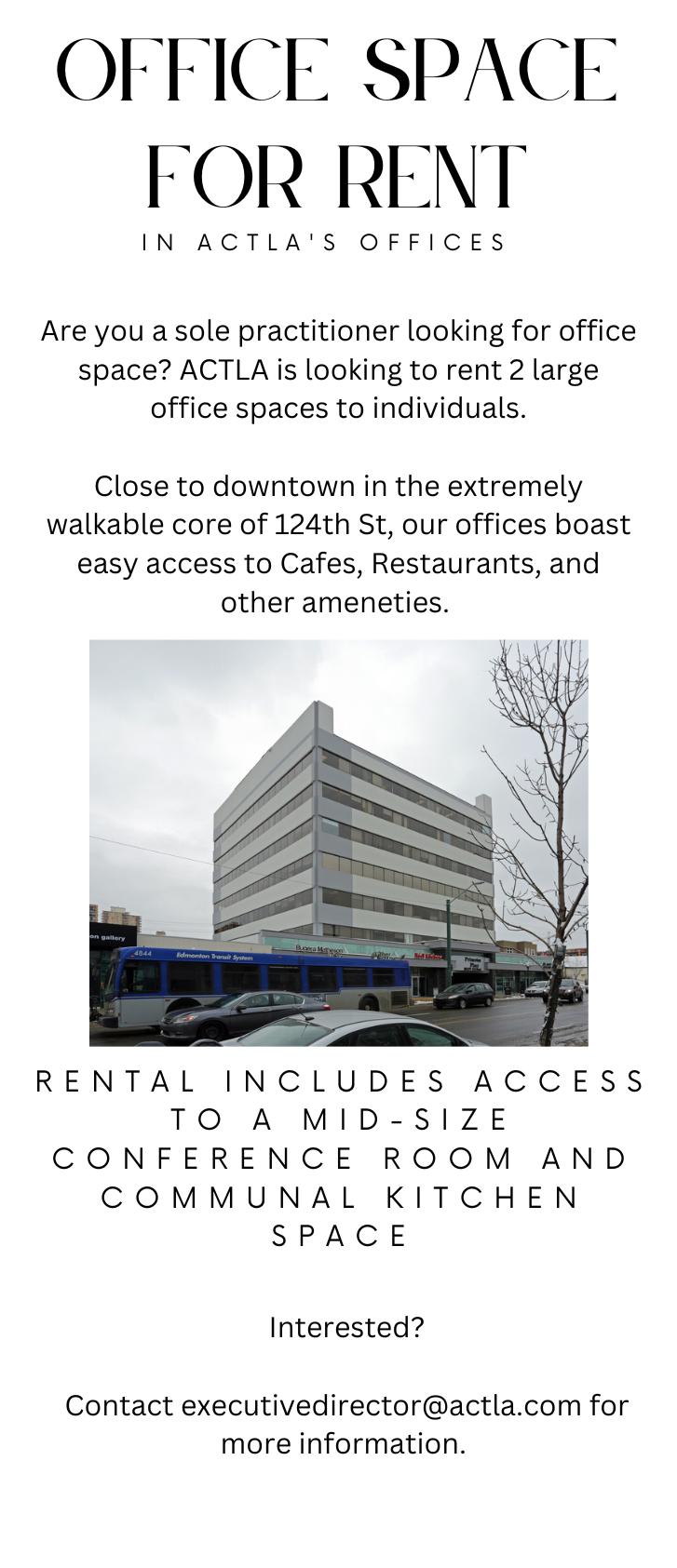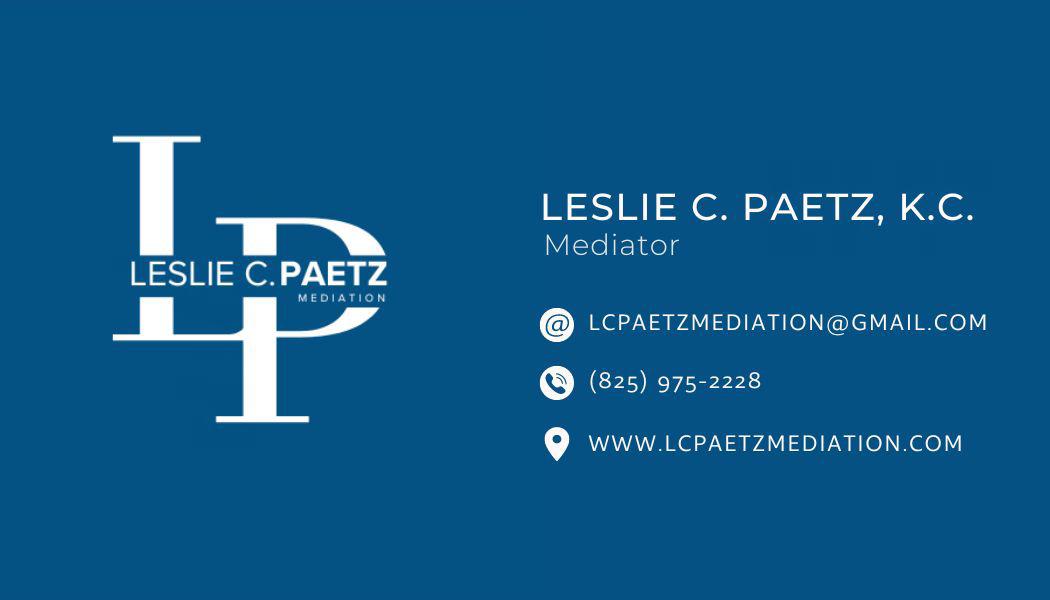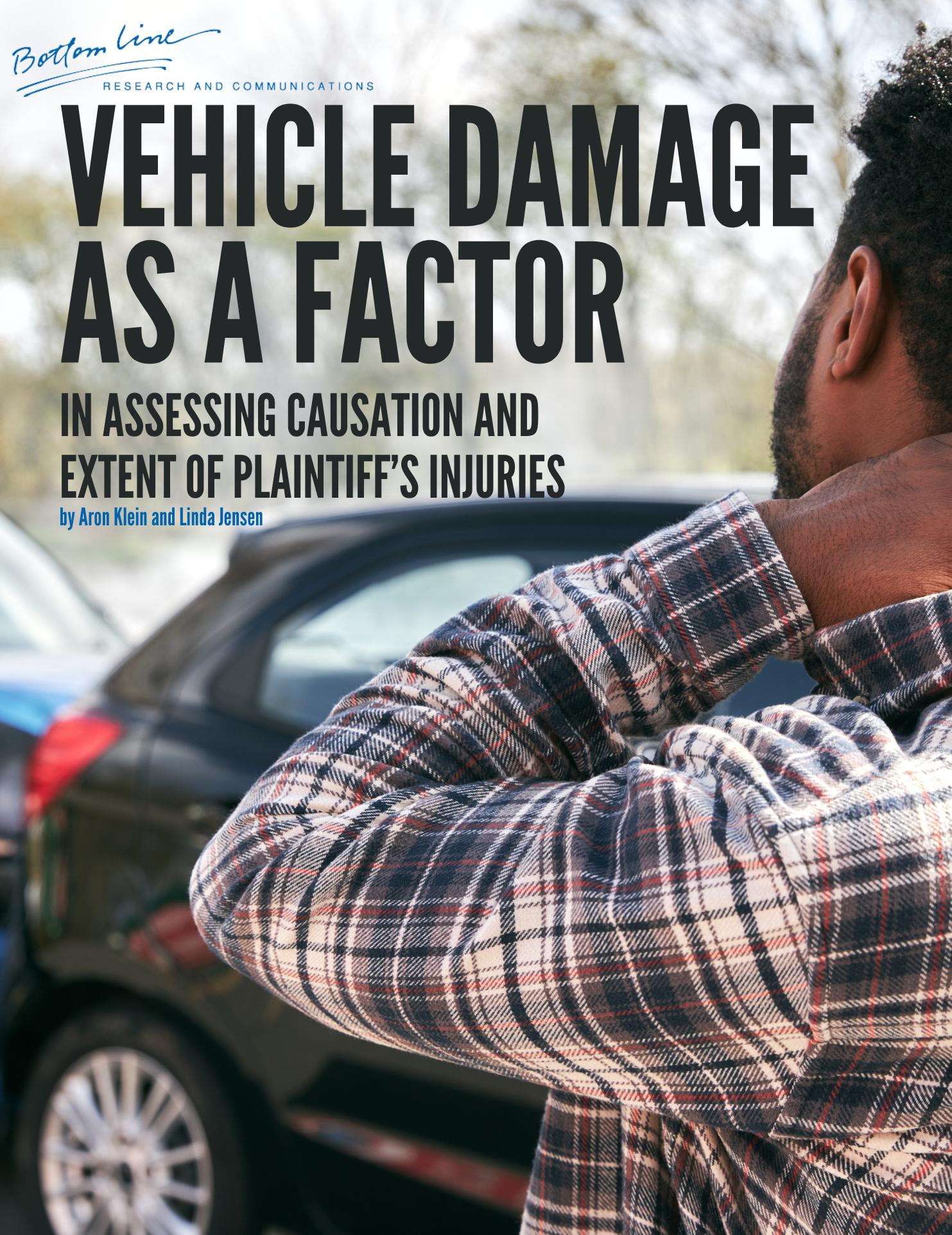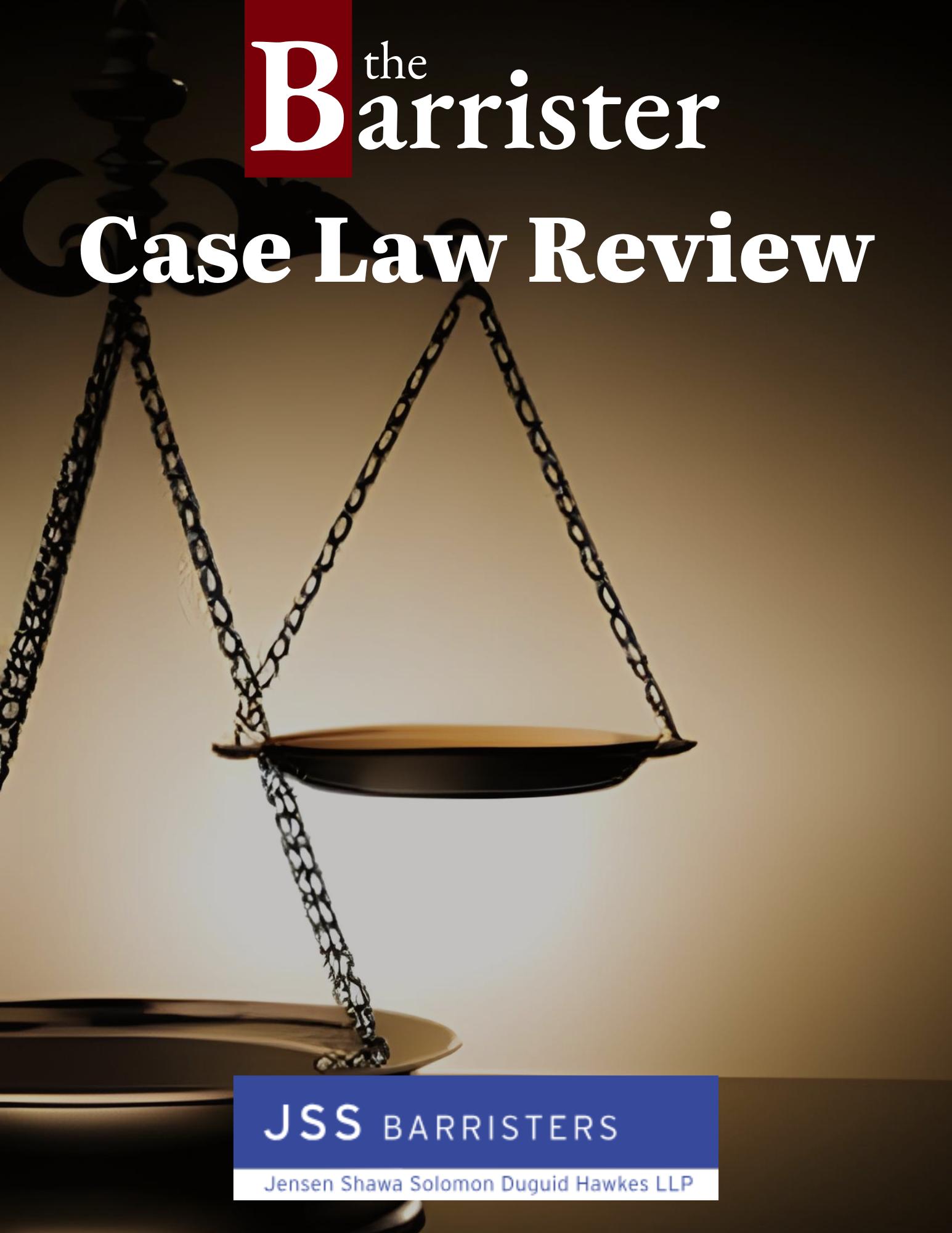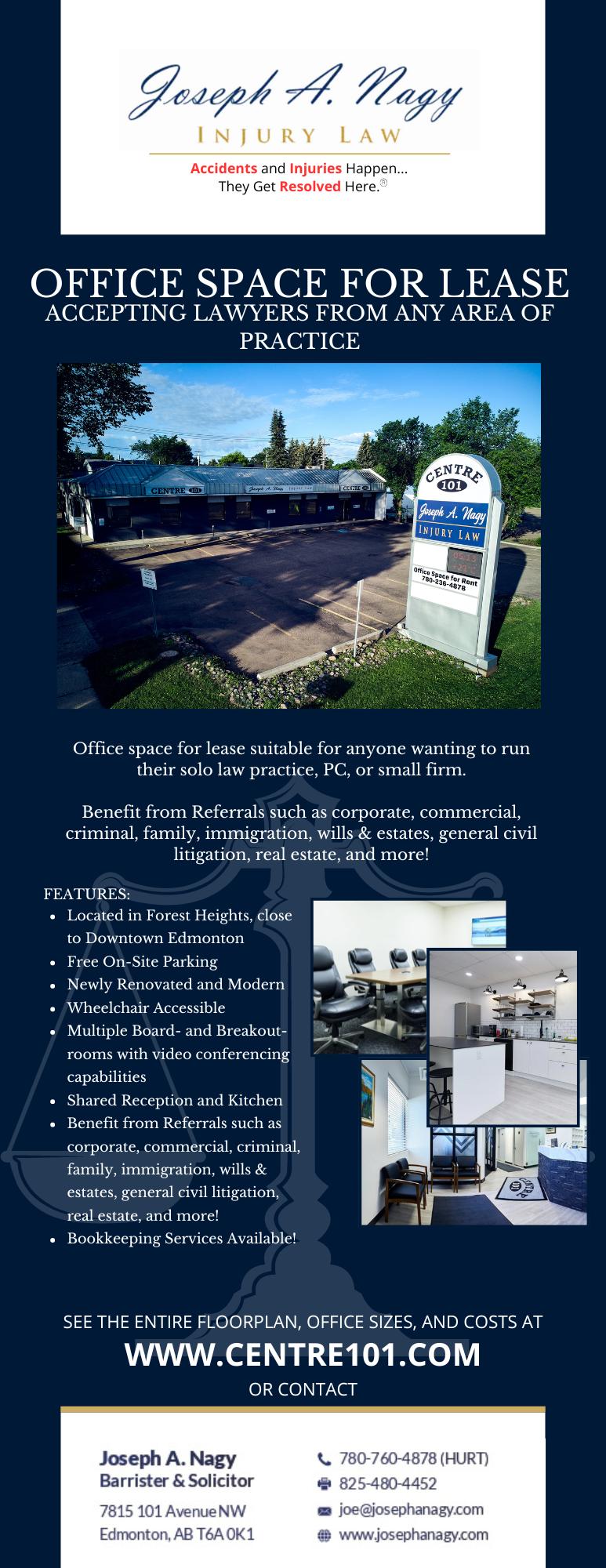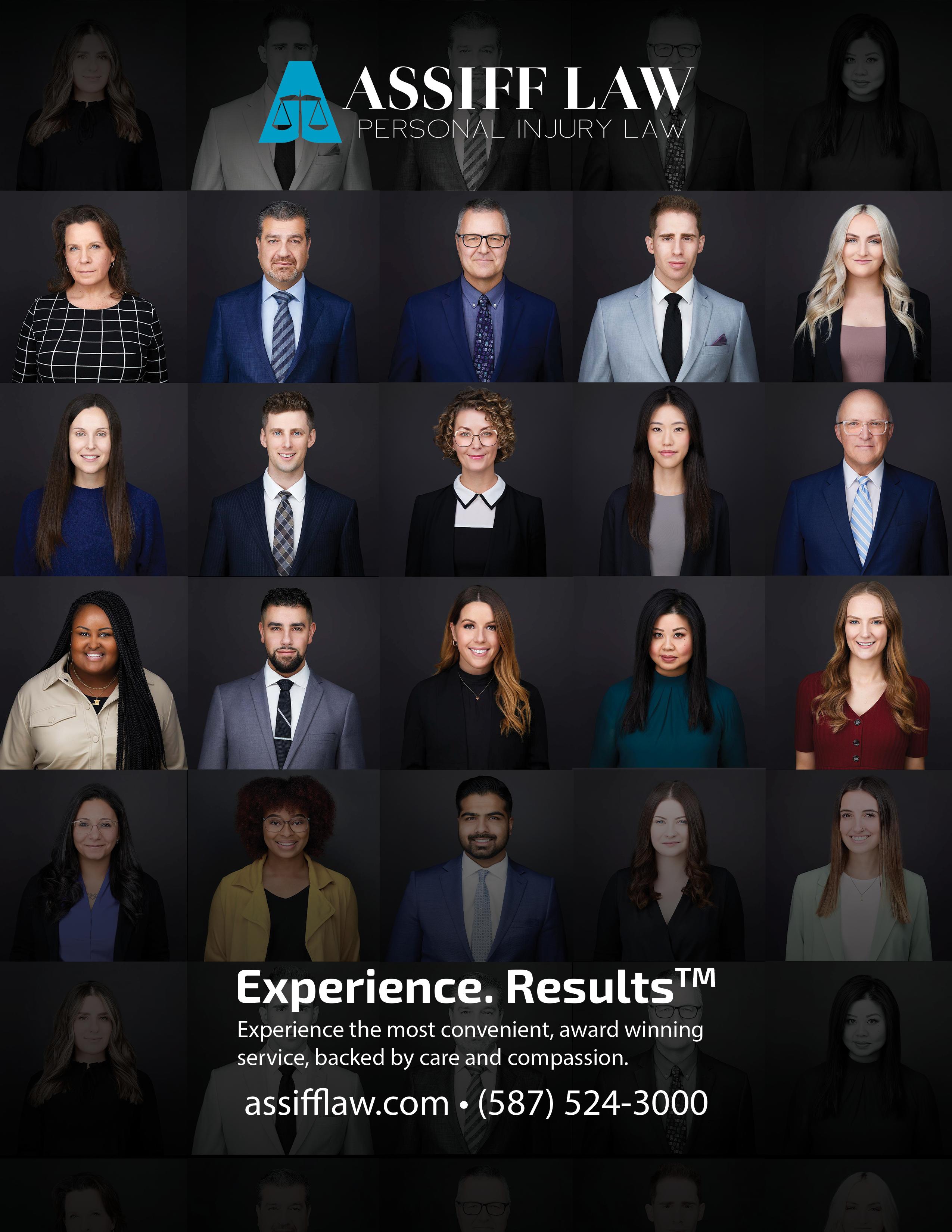CLAE WILLIS
advance in the amount of $75,000, payable as a lump sum.
In Bennett v. Certas Home and Auto Insurance Co. [2019] A.J. No. 604 (QL)(K.B.), the court awarded $25,000, with $5,000 payable as a lump sum up front, with the remaining funds payable in $1,000 intervals over 20 months.
In Villeda v. Wawanesa Mutual Insurance Co., [2004] A.J. No. 112, online: QL, $3,000 per month for a period of 12 months for a total of $36,000 was awarded.
Tying s. 581 Payments to Steps in the Litigation
Tying s. 581 payments to steps in the litigation is clearly inappropriate and would defeat the objective of the Rules of Court and the purpose of S. 581. The reality of personal injury litigation is that the defense can delay the litigation, and accordingly, the payment to the plaintiff. This was discussed in Han.
THE COURT: All right. One of the things I was going -- and here I don't know if this makes any sense or if it could be useful in any way. What if -- and because there -- I know that there was a concern which isn't reflected in the tests or in the regulation or legislation, there's a concern about what the money is going to be spent on, would it make any sense to stage the payments? Like, if -- so if X dollars were paid now and Y dollars were paid and then Z dollars were paid, or whether it should all just come as a lump sum, any thoughts about that? Because, you know, I imagine even in our economic situation now, I mean, she doesn't need $40,000 today. What she needs is enough to get by, but I'm not saying that she should get, you know, a thousand a month. But I'm -- but what if we were to break this up into two or three payments, or something like that?
MR. NAGY: I can't say I would have those instructions from my client. I would not -- I would not be opposed to that myself –
THE COURT: Right.
MR. NAGY: - personally, but I could certainly say that, you know, she is a -- for example, she's got two $5,000 loans to pay off quickly which she'll probably do with the settlement funds.
THE COURT: Right.
MR. NAGY: And then, you know.
THE COURT: So that takes -- that's 10,000 right there.
MR. NAGY: Yeah, 10,000 plus.
THE COURT: So if we -- if we were -- what if we were to have two payments, say one of 20 within, is two weeks too quick?
MS. PROUDFOOT: Sir, I can advise that my adjuster is actually on holidays at the moment. So if I could have until the end of the month –
THE COURT: All right. What if we were to say –
MS. PROUDFOOT: - that would be appreciated.
THE COURT: What if we were to say 20 by -- I'm looking for a calendar [sic] here.
MS. PROUDFOOT: And on that note, Sir, I would add that there are authorities suggesting that the Court is encouraged to impose terms which will facilitate a timely resolution of the matter so that –
THE COURT: Right.
MS. PROUDFOOT: - we don't wind up in a situation where the defendant is paid a settlement advance, and then all of a sudden it's brakes on the action.
THE COURT: Right.
MS. PROUDFOOT: And the courts have suggested that in -- in those circumstances, a staggered approach is appropriate that may also, in fact, impose terms on the litigation suggesting -- not a litigation plan of sorts, but that there will be timelines during which steps will be taken, and payments will be made in accordance with those steps.
THE COURT: All right. What if we were to say -- okay, so we are at the 18th today. Oh. Well, what if we were to say first payment by June 2nd, and I'm thinking $20,000, because, again, she's got the loans outstanding. She needs at least that amount, and that would give her the ability to -- to pay off the 10,000 loan, with a 10,000 cushion, which would carry her for a period of time. And I'm wondering whether the -- so June 2nd for the first payment, 20,000. What if we were to go with 10,000 on August 2nd, and 10,000 on October
3rd? Does that -- does that make sense, because that -- that provides some assurance to the payor in this case that the brakes won't be put on, and -- and that the money won't be just -- just blown, though in -- from one perspective, you know, it doesn't -- who cares? I mean, it doesn't matter. She gets the money, she can do with it what she wants, but that does reduce the financial impact so you don't have -- you're not out-ofpocket immediately.
MS. PROUDFOOT: If I may submit, Sir, that instead of setting forth the payments on -- in accordance with the schedule, like the calendar [sic] months.
THE COURT: Right.
MS. PROUDFOOT: Perhaps we could do it in accordance with some of the next upcoming steps in the litigation. So Mr. Nagy has very promptly provided a number of undertakings –
THE COURT: All right.
MS. PROUDFOOT: - since our -- the examination in January. I don't have any reason to believe that that's not going to continue, and that's certainly not my implication in any sense, but perhaps if we could have the second payment made when answers to undertakings are complete, and then that third payment made perhaps, you know, in accordance with when we determine IMEs will be exchanged, or expert -- you know, we'll notify –
THE COURT: Okay.
MS. PROUDFOOT: - one another of expert reports.
THE COURT: So we'd have 20 that would be coming June 2nd, and then what I'm hearing is 10, completion of undertakings, and then 10 –
MS. PROUDFOOT: Let's say maybe three months after completion of undertakings, the expectation is the parties will notify one another of expert reports.
MR. NAGY: You know, the problem I have with that, My Lord, while it may sound reasonable, we know the real -- what -- the realism of litigation, especially personal injury litigation –
THE COURT: Right.
MR. NAGY: - is that what happens if my friend says,
well, you haven't answered your undertakings.
THE COURT: Right.
MR. NAGY: And what happens if my friend says, well, I don't want to do my DME's at this time? And what happens if my friend says, well, we don't want to set this trial down, set this down? They get to control the steps in the litigation.
Now, the plaintiff has an obligation to move the matter forth in a timely manner, but I don't think there's under -- anything under Section 581 which suggests that the defendant can control the steps –
THE COURT: Right.
MR. NAGY: - procedurally by which payments should be made.
THE COURT: Okay. Well --
MR. NAGY: I would -- I would say, submit that June 2nd, August 2nd, October 3rd, 20,000, 10 and 10, as you have suggested, would be fair.
THE COURT: Okay. That's what -- and that's what we'll go with, then. We'll go with the June 2nd -- June 2nd, August 2nd and -- August 2nd and October 3rd.
Trial Grade Evidence
Trial grade evidence is not required for a S. 581 advance payment. A Judge must be able to reach a fair and just determination of the merits of the application. The record must allow the Judge to make the necessary findings of fact. In Simpson, Justice Renke writes:
The second reflection on the evidential foundation for an advance payment order is that at this stage of proceedings, we are not in a trial. We haven't heard viva voce evidence, and I take Mr. Nagy's point that a Court must ensure that it's not unfair to plaintiffs by demanding evidence suitable for trial long before the trial, and the way I put this point earlier is that it wouldn't be proper to run the trial before the trial is run.
[...]
Further to this point about the evidential foundation for an advance payment order, the evidence
that will be required is going to be dependent on a particular case. So a case-by-case approach is going to be required, and that's because the amount of evidence or the type of evidence required will vary, depending on the nature of the accident, depending on the medical history of the plaintiff leading up to the accident. It will depend on what's occurred to the plaintiff following the accident, and it will turn on any medical evidence that's available at the time of the application.
So we don't have trial grade evidence at this point, but simply the nature of the proceeding, and I do keep in mind that we can't impose unfair standards relating to the evidential record on a plaintiff at this point.
The Evidentiary Standard
It is clear that the evidentiary standard on a Section 581 advance application is a balance of probabilities. In Simpson, Justice Renke writes:
During the application, there was discussion of the evidential foundation for an advance payment order, and I'll offer three reflections for considerations. Mr. Matthews has suggested in his materials that a plaintiff is subject to a high standard of proof, and I -- I don't agree with that formulation of the approach as being consistent with the authorities, for these reasons. First, the standard of proof is balance of probabilities, and that's confirmed in paragraph 15 of Shannon and in Justice Crighton's Bexson, [2014] A.J. No. 713 decision. What we read in paragraph 10 is that the applicant need not prove his case on a balance of probabilities at this early stage, and somewhat later in paragraph 10:
. . . but the applicant must demonstrate, on a balance of probabilities and with the evidence available to the Court, that he will probably meet the civil standard of proof at trial for the recovery he seeks.
And the Bexson approach is reflected in the decision of Justice Schlosser in Stewart v Insurance Corporation of British Columbia, 2014 ABQB 578 at paragraph 19, and at item 3 of that paragraph, Master Schlosser
writes that:
An advance payment requires, among other things, that the applicant has demonstrated that it is probable that liability will be established on a balance of probabilities.
Hearsay Evidence
Justice Burns, in Alexander, followed the approach taken by the Court in Macrae (Litigation representative of) v. Intact Insurance Co., [2017] A.J. No. 489, online: QL and held that contrary to Rule 3.8(2) of the Alberta Rules of Court, Alta. Reg. 124/2010, hearsay evidence presented by both parties is acceptable in Section 581 applications.
Necessities of Life
The Applicant should provide a comprehensive list of household income to assist the Court in establishing the necessities of life equation.
In Patel v. Certas Direct Insurance Co., [2020] A.J. No. 793 (Q.L.)(K.B), the court states:
Where a claimant is in a spousal or common-law relationship, the "necessities of life" equation requires an x-ray of household income and assets. If the outcome of a "no advance payment" decision is that the claimant's "basics" will continue to be covered by his partner, the test for funding is not met. He may have some obligation to square up with her down the road -- e.g. after any trial or settlement of this action -- but that does not mean his "necessities" will not be covered in the meantime.
Framing the Issues
It is important to identify and frame the issues outlined in the statute and case law clearly for the Court. I identify the issues as follows:
Issue #1: Is the defendant probably liable to the applicant for the amount requested or more?
Probability, liability, and damages are key elements, the importance of which cannot and should not be
ignored. Failure to establish these would likely result in an unsuccessful application.
With respect to issue #1, the Affidavit will need to satisfy the Judge that liability is not in issue. In a typical motor vehicle accident case, a collision report form showing that the Plaintiff was a passenger in a rear end motor vehicle collision is useful. Never underestimate the burden of proving liability. You may think that this point should be so obvious that it need not be proven. In Macrae, I was faced with such an argument. My client was a passenger in a motor vehicle. The Defendant operator stopped at a secondary road. He looked, saw no traffic, and proceeded on to the highway when it was unsafe to do so and a collision ensued. I was shocked, but not surprised, when I received the Defendants brief arguing that I had not proven liability. Obviously my Brief was lacking on this point. I was more shocked when the Judge began with “Mr. Nagy, I am not convinced you have proven liability and I would like to hear your submissions on that first.” Justice Ackerl wrote:
In written material, the plaintiff did not reference admissible evidence surrounding the actual accident to support its position of probable liability. This application is an originating application and by virtue of Rule 3.8(2), a statement of facts within the personal knowledge of the person swearing the affidavit must describe the content of such affidavit.
Here the evidence contained in the affidavit of Mr. MacRae discussing his view of the accident was clearly hearsay. The reference I'm speaking to is contained in the March 22nd, 2016, affidavit of Wayne Richard. While describing the accident in general detail, Mr. Richard did acknowledge in questioning that he was not present at the accident and had no personal knowledge of what occurred. In effect, this is hearsay evidence of unknown reliability and presumptively inadmissible. I note no argument was advanced to support admissibility as either a principled or recognized exception.
In oral submissions, counsel for the plaintiff tendered documentation to support his argument that probable liability lies with the defendant. In
particular, he pointed to a questioning for discovery of Keith Toews which, in his view, provides a more fulsome explanation of Mr. Toews' evidence surrounding what occurred. In effect, that transcript contains questions and answers concerning Mr. Toews' behaviour in his viewing of the intersection before entering that particular location. He also applied to enter into evidence a copy of an Information indicating that Mr. Toews, the driver, pled guilty to failing to proceed safely after stopping at an intersection. That conviction relates to events on April 7th, 2014, and, indeed, more particularly to the incident underlying the tort claim in this application.
I do note that, in the transcript I have just referred to, that Mr. Toews did admit to paying that particular fine.
There was some argument advanced about admissibility and whether or not there was technical compliance with the Alberta Evidence Act as it pertained to the Information copy provided, and to the Alberta Rules of Court to admission of the questioning for discovery. I am prepared to admit both documents into evidence for my consideration. In exercising that discretion, I note the philosophy of Mr. Justice Renke in a recent decision in which, in essence, he recognized the importance of attending to this type of application in an expeditious manner, provided the record permitted a fair and just determination. In effect, Justice Renke's approach was to not require a trial before a trial. Given the helpful submissions advanced by counsel, and their willingness to address this particular issue, and recognizing that counsel for the defendant objected to its admissibility, I have come to the opposite conclusion, as already noted.
The use of the word "probably" in issue number #1 is aligned with the evidentiary standard of the balance of probabilities. Liability can usually be proven through the introduction of a collision report form. I've also used portions of transcripts of the Defendant's discovery evidence to assist in proving liability.
The Implied Undertaking of Confidentiality
The tort action and the 581 Application are separate actions. On the face of it, there is an implied Undertaking not to use information or documents gathered in the tort action in the Section 581 application. The implied undertaking has been codified in the Alberta Rules of Court as rule 5.33. I've yet to encounter an Application where counsel did not agree to waive the implied undertaking of confidentiality. I expect the Court would grant an Order lifting the implied undertaking on request. The issues in the tort action and 581 Application are extremely similar and very intertwined. In L.(P) v Alberta, 2012 ABQB 309, 2012 CarswellAlta, 1001 529, A.R, 21, 64 Alta L.R (5th) 322, Justice Graesser determined that Rule 5.33 is a codification of the common law. He writes:
Considerations in determining whether the implied undertaking should be lifted include the presence of fraud or criminal wrongdoing, whether the information could have been obtained from other sources, whether third parties are involved, and whether the new proceedings are connected with he proceedings in which disclosure was made, in the sense that they involved the same or similar parties, the name or similar issues, and arise out of the same series of events.
Rule 3.13(2) – The Pitfall
One of the Plaintiff's obligations is to provide as much evidence in support of damages for the Court. In my past Applications, I have attached numerous expert reports generated in the tort action to prove damages. There is a pitfall to doing this. Rule 3.13(2), permits a person to be questioned under oath as a witness for the purpose of obtaining a transcript of the persons evidence for use at the hearing of an Originating Application. Combined with Rule 5.33 and Justice Graesser’s comments on lifting the implied undertaking, this would permit the defence to request the clinical records of an expert whose report was relied upon in support of the Originating Application. It effectively allows the same counsel defending the Originating Application and the tort action to cross-examine your expert. This a terrible technical downfall for Applicants in a Section 581 Application. To avoid this, one's
only option is to hold onto the expert reports generated in the tort action and only rely on clinical records. This weakens the strength of the evidence that the Plaintiff is obligated to provide in support of damages. I would avoid introducing any expert reports in support of the 581 Application.
Issue #2: The second issue is, without the advance payment, is the plaintiff likely to go without necessities (or things broadly analogous), or unlikely be able to prosecute his or her claim for damages?
I have faced several arguments from the respondents counsel on this issue which have failed. Among others, these would be that the applicant is an adult living with his parents who have agreed to waive payment for rent until the tort action is resolved. Or, the plaintiff has been able to obtain bridge financing from third party lender. Or, the Plaintiff has been able to sell real or personal property to ameliorate their financial position. These arguments are put forth to argue that without the advance payment, the Applicant is unlikely to continue to go without necessities. It is important to remember that this is a twofold issue. In Simpson (supra), Justice Renke considered similar arguments and writes as follows:
The question then is under 5.6(3)(b): The payment is otherwise appropriate? Am I satisfied that the payment is otherwise appropriate taking into all of the matters that I have discussed up to this point.
I would also make the argument that the applicant was put into their financial position as a result of the Defendant in the tort action, and it would be terribly unfortunate to blame the applicant for mitigating their damages.
Issue #3: Does the risk of overpaying exceed the Applicant's likely loss without the advance payment?
At this juncture, it is important to include evidence of household finances. As mentioned earlier, in Patel (supra) the Court states:
Where a claimant is in a spousal or common-law relationship, the “necessities of like” equation requires an x-ray of household income and assets. If
the outcome of a “no advance payment” decision is that the claimant’s “basics” will continue to be covered by his partner, the test for funding is not met. He may have some obligation to square up with her down the road – e.g. after any trial or settlement of this action – but that does not mean his “necessities” will not be covered in the meantime.
Include general damage awards for the Court and income loss if it can be proven. You want to show that the amount of the advance requested is very conservative and far less than the estimated value of the Plaintiff's claim. Hence, there would be no risk of overpayments.
Issue #4: Should any terms and conditions be imposed on the Applicant to mitigate the Defendants risk?
The Shannon (supra) case states that a covenant to pay is standard and reasonable and I usually do not argue with this.
The Obligation to Repay Third-party Lenders from the Advance
This is a contractual obligation, and one must first look to the Lenders Loan and Security Agreement for the answer. Generally, there is no question that the loan itself must be repaid upon the settlement of the tort claim. However, the following is a contractual clause taken from one such plaintiff loan security agreement:
Note that if it is anticipated that there may be more than one settlement amount in respect of the claim, each settlement amount shall be used in its entirety to repay obligations outstanding at such
time, until all obligations are repaid in full.
This, undoubtedly, binds your client to pay the advanced settlement amount to the lender to pay off financial obligations. However, this can be negotiated with the lender. I have, on certain occasions, been able to have the obligation deferred until the final settlement of the tort action. Third-party lenders have committees to consider such requests. They will usually want to know if the deferral could be a barrier to settling at a later date. One of the main considerations will be the amount of the loan and the amount of interest accrued until the final settlement of the tort action. If, for example, you would expect the value of the tort action to settle for $250,000 at a mediation in six months time, and the amount of the loan with interest is expected to be less than $50,000, the committee would be more inclined to grant a deferral. However, if the obligation to repay a $75,000 loan (or more) with interest is payable on the expectation that the tort claim will settle in two years, it is rather unlikely a deferral will be granted. In consideration of making your written request to the lender, have them consider that you will defer your contingency fee on the advance until such time the claim is resolved. Sometimes a lender would recommend accepting a partial repayment from the settlement advance and a partial deferral of the remaining balance in future interest from the final settlement.
I hope that this paper will assist in overcoming any potential barriers to obtaining a Section 581 advance for your client. These Applications are difficult. There is plenty of work involved that goes beyond the standard course of action of obtaining a settlement in the tort claim. As Plaintiff lawyers, we bring these Applications on behalf of our clients out of compassion.
Joe has been practicing motor vehicle accident injury law for over 20 years. He has been a member of the Alberta Civil Trial Lawyers Association for his entire career. He is currently a sustaining member and serves on the board as a Member at Large.
Joe has been successful in obtaining 581 advances in many cases without bringing applications and is the guru of Section 581 Applications in Alberta. Joe has five successful published decisions under Section 581 of the Insurance Act, RSA 2000, c I-3:
• Bennett v Certas Home and Auto Insurance Co., (2015) ABQB 578 (CANLII),
• Macrae (Litigation representative of) v. Intact Insurance Co., [2017] A.J. No. 489, online: QL
• Needham v. Economical Mutual Insurance Co., [2019] A.J. No. 233, ABQB; online: QL
• Simpson v. Co-operators General Insurance Co., [2017] A.J. No 298; online: QL;
• Han v Royal & Sun Alliance Insurance Co. of Canada, (2016) A.J. No 569, ABQB, online: QL
Caring for and fighting for your
Prepared with many thanks to Walter Kubitz K.C. for his helpful feedback and contributions to the preparation of this research.
A successful claim for damages arising from a motor vehicle collision often turns on proof of causation – specifically, whether and to what extent the defendant’s conduct, on a balance of probabilities, was the cause of the plaintiff’s injuries. In the seminal decision in Athey v. Leonati, [1996] 3 SCR 458, [1996] SCJ No 102, the Supreme Court established a number of principles that govern determinations of causation, including the “but for” and “material contribution” tests, and the absence of any requirement to show that the defendant’s conduct is the sole cause of the plaintiff’s injuries. As observed by Major J, “[a]s long as a defendant is part of the cause of the injury, the defendant is liable.
In attempting to establish a causal link between the defendant driver ’s negligence and the plaintiff’s injuries, courts have sometimes been asked to consider the extent of damage to one or both of the vehicles as an indicator of the likely extent of injuries that may be causally related to the accident. Debate on this point may be particularly likely to arise in cases of low-impact collisions causing little vehicle damage, where a defendant may challenge the extent of injury claimed by the plaintiff on grounds that it is disproportionate to the physical damage and impact of the collision.
While recognizing that the extent of vehicle damage is not an irrelevant consideration, courts have repeatedly rejected arguments proposing any straight-line correlation between the scope of vehicle damage and the severity of injuries that may be attributed to the accident. On the contrary, case law affirms that no principle of law precludes a finding of serious injuries resulting from accidents with minimal vehicle damages. In all cases, the proper test remains whether the plaintiff can show on a balance of probabilities that their injuries resulted from the collision.
Relevant Case Law
While both BC and Alberta courts have issued judgments indicating that the dollar amount of damage to a vehicle should not be a predictor of the extent of the injuries suffered by the plaintiff, the BC courts have been more explicit in stating a clear principle to that effect.
A decision that is frequently cited for its clear language on this point is Lubick v. Mei, 2008 BCSC 555, [2008] BCJ No 777. The plaintiff in that case was stopped at an intersection waiting to turn left when the defendant’s vehicle bumped him from behind. The plaintiff described the collision as a “jolt that I wasn’t prepared for” and the defendant said the vehicles "barely touched" and that the impact was "very light, just a little boom". Damage to the vehicles was minimal. Although the plaintiff did not initially seek medical assistance for injuries related to the accident, he subsequently received physiotherapy treatment for low back issues. Macaulay J found that the plaintiff did sustain injuries despite the low impact of the collision, and rejected the defendant’s argument that a nominal award of $1,000 was fair. Macaulay J observed that medical evidence established the injuries, and there is no legal principle barring recognition of injuries based on minimal vehicle damage:
[5] The Courts have long debunked as myth the suggestion that low impact can be directly correlated with lack of compensable injury. In Gordon v. Palmer, [1993] B.C.J. No. 474 (S.C.), Thackray J., as he then was, made the following comments that are still apposite today:
I do not subscribe to the view that if there is no motor vehicle damage then there is no injury. This is a philosophy that the Insurance Corporation of British Columbia may follow, but it has no application in court. It is not a legal principle of which I am aware and I have never heard it endorsed as a medical principle.
He goes on to point out that the presence and extent of injuries are determined on the evidence, not with "extraneous philosophies that some would impose on the judicial process". In particular, he noted that there was no evidence to substantiate the defence theory in the case before him. Similarly, there is no evidence to substantiate the defence contention that Lubick could not have sustained any injury here because the vehicle impact was slight. [emphasis added]
Lubicki was followed in Blackman v. Dha, 2015 BCSC 698, 2015 CarswellBC 1156. The 37-year-old female plaintiff claimed damages for injuries sustained in a motor vehicle accident where the defendant rear-ended her. She said her car moved forward slightly, causing her to press firmly on the brake. She felt discomfort in her neck within a few minutes of her body being jolted. After the accident, she went to meet her family at a restaurant. The cost to repair her vehicle was $1,017.25. The accident caused the plaintiff to suffer chronic cervical spine sprain/strain; chronic mechanical neck pain and possible discogenic neck pain; chronic shoulder interscapular muscle strain with possible scapulothoracic bursitis; and chronic post-traumatic headaches that were suggestive of occipital neuralgia. The defendant argued that the plaintiff’s complaints were out of proportion with the minor nature of the accident. Devlin J held that the medical evidence established on a balance of probabilities that the plaintiff’s injuries were caused by the collision:
[66] It has been well recognized by the courts that the limited amount of motor vehicle damage is not “the yardstick by which to measure the extent of the injuries suffered by the plaintiff”. As Mr. Justice Macaulay stated in Lubick v. Mei, 2008 BCSC 555 (B.C. S.C.) at para. 5:
The Courts have long debunked as myth the suggestion that low impact can be directly correlated with lack of compensable injury. In Gordon v. Palmer, [1993] B.C.J. No. 474 (S.C.), Thackray J., as he then was, made the following comments that are still apposite today:
I do not subscribe to the view that if there is no motor vehicle damage then there is no injury. This is a philosophy that the Insurance Corporation of British Columbia may follow, but it has no application in court. It is not a legal principle of which I am aware and I have never heard it endorsed as a medical principle.
He goes on to point out that the presence and extent of injuries are determined on the evidence, not with “extraneous philosophies that some would impose on the judicial process”. In particular, he noted that there was no evidence to substantiate the defence theory in the case before him. Similarly, there is no evidence to substantiate the defence contention that Lubick could not have sustained any injury here because the vehicle impact was slight [emphasis added].
In Boudreau v Zhang, 2019 BCSC 1347, [2019] BCJ No 1523, the plaintiff’s vehicle was struck from the side
by the defendant’s vehicle. The accident did not involve a violent collision - the air bags did not deploy in either vehicle and both parties drove away from the scene of the accident. MacNaughton J nonetheless found that the plaintiff had suffered a mild traumatic brain injury which was causally connected to the accident:
[20] The defendant relies, in part, on an argument that, based on the vehicle damage, and Ms. DeMarco’s biomechanical engineering evidence, it is extremely unlikely that the Accident was of sufficient force to cause Ms. Boudreau to suffer a concussion. The essence of this argument is that the likelihood of Ms. Boudreau suffering a concussion may be assessed from vehicle damage. As discussed below, Dr. Wong also considered the vehicle damage in support of the conclusions in his report.
[21] In Gordon v. Palmer, 1993 CanLII 1318 (BC SC), [1993] B.C.J. No. 474 (S.C.), Mr. Justice Thackray, when a member of this Court, rejected the proposition that vehicle damage can be used as a measure of the likelihood of injury:
[5] Significant injuries can be caused by the most casual of slips and falls. Conversely, accidents causing extensive property damage may leave those involved unscathed. The presence and extent of injuries are to be determined on the basis of evidence given in court.
[…]
[23] Even a low-impact collision can cause injury, and it is the whole of the evidence, both lay and medical, that must be considered to determine whether there has been an injury. [emphasis added]
In Duda v. Sekhon, 2015 BCSC 2393, 2015 CarswellBC 3746, the 25-year-old female plaintiff was in two motor vehicle accidents. Immediately following the first accident, in which she was rear-ended, the plaintiff began to experience pain and stiffness in her left shoulder girdle. In the second accident, the injuries from the first accident were aggravated, and the plaintiff began to experience mid and low back pain extending into the buttocks. A collision investigation report found that the speed of the first collision was less than 11 km/hr and caused only minor damage to the plaintiff’s vehicle. An injury biomechanics report found that the plaintiff was wearing a properly functioning seatbelt and did not anticipate the collision. The report concluded that the plaintiff suffered a whiplash injury consistent with collision exposure. The defendant argued that neither of the two accidents caused significant motor vehicle damage. Ball J found that the plaintiff’s evidence concerning her injuries was credible and held that the limited vehicle damage did not provide a reason to doubt her testimony:
[62] Counsel for the defendants spent considerable time and effort making the submission that the two accidents did not cause significant motor vehicle damage. However, it has been clearly established in Canadian law that minimal motor vehicle damage is not “the yardstick by which to measure the extent of the injuries suffered by the plaintiff”. […]
[…]
[67] I find Ms. Duda to be entirely credible. She did not seek to exaggerate and her evidence was present-
ed in a direct manner. She was responsive to questions, including questions posed in cross-examination. I accept her evidence with regard to her symptoms, both past and present. There was no evidence at all of any pre-existing injury or condition. I am satisfied beyond any doubt that her injuries and ongoing symptoms were caused by the two accidents in 2012. While the accidents were not significant and the damage to the vehicles was slight, the evidence points to no other cause of the injuries and symptoms experienced by Ms. Duda [emphasis added].
In Dabu v. Schwab, 2016 BCSC 613, 2016 CarswellBC 927, the 54-year-old female plaintiff suffered from neck, back, and shoulder pain, as well as psychological problems including a major depressive episode and panic attacks after a low velocity rear-end collision. The defendant testified that the accident was a “love tap” and that the plaintiff’s vehicle had pre-existing damage (which the plaintiff later admitted to). Steeves J nonetheless found that the medical evidence established the plaintiff’s physical and psychological injuries, which affected her personal life and work, were causally connected to the accident:
[29] Finally, it is well-established that minimal vehicle damage is not the “yardstick” to measure the extent of a plaintiff’s injuries. That may be the philosophy of insurance carriers but it has no application in court and no medical basis. The presence and extent of injuries are determined on the basis of evidence rather than extraneous theories (Duda v. Sekhon, 2015 BCSC 2393 (B.C. S.C.), at para. 62, citing Lubick v. Mei, 2008 BCSC 555 (B.C. S.C.), at para. 5, citing Gordon v. Palmer (1993), 78 B.C.L.R. (2d) 236 (B.C. S.C.)) [emphasis added].
While not stating the principle as definitively as the British Columbia courts, the Alberta courts have awarded damages for injuries sustained in low-impact collisions with minimal property damage based on the same reasoning. In Pfob v. Bakalik, 2003 ABQB 819, [2003] AJ No 1204, appeal dismissed 2004 ABCA 278, 354 AR 359, the plaintiff initially continued to work after the accident despite experiencing concussion-like symptoms, but several months later, he took ten month off work to heal, based on the advice of his doctors. The defendant argued that the damages claimed were out of proportion to the low impact of the collision and the plaintiff’s injuries could only have been explained by a pre-existing condition. Erb J found that medical evidence to the contrary was compelling:
[33] On causation, the Defendant argued that the damages claimed as a result of the impact for which it has accepted responsibility, are out of proportion to the low impact of the collision and must be explained by a pre-existing condition. This pre-existing condition as submitted by the defendant was a psycho-social disorder which has manifest itself in physical pain.
[34] It is not the amount of damage which is the determining factor in whether an individual is injured in a lower impact collision. Members of the medical profession, among others, have established that an injury can occur where the head and neck are rotated or extended at the moment of impact. The impact on an acceleration-deceleration movement becomes exaggerated and the injury is more severe than it would have been had the plaintiff sat upright with his head against his head rest anticipating the accident and therefore protecting himself against it. [emphasis added]
The reasoning in Pfob is the closest the Alberta courts have come to an explicit statement affirming the principle set out in the BC jurisprudence. However, the manner in which other decisions have applied the principles of causation appear to reflect similar considerations.
In Goertzen v. Sandstra, 2005 ABQB 623, [2005] AJ No 1134, the plaintiff was stopped at a red light when a vehicle that was hit by another vehicle ran into him in a chain reaction collision. It was estimated by an accident reconstructionist and biomechanist that the speed change sustained by the plaintiff’s vehicle was between 3.5 and 12 km/hr. Notwithstanding the minor impact, the plaintiff had not worked since the accident. According to the plaintiff, immediately after the accident he felt a shooting pain in his neck that extended through his shoulder and down to his arm. It was later determined that he had injured his C2 and C3 facet joints in the accident, and this eventually developed into chronic pain, depression, and generalized anxiety disorder. The plaintiff was involved in a second motor vehicle accident approximately two years later that was a more significant impact and exacerbated his injuries. Concerning the first accident, however, Hawco J found that the extent of the plaintiff’s injuries were believable, notwithstanding the low impact of the collision, and applied basic principles of causation:
[70] From early June 2003, Mr. Goertzen’s condition appeared to deteriorate significantly. His depression deepened, his anxiety increased, and his pain increased. By the time of the second accident, Ms. Kim MacIsaac had already determined that he was unemployable.
[71] The first accident would not, in the normal course of events, have done anything more than cause, at the most, a mild whiplash. According to Dr. Russell, that accident could not physically have caused Mr. Goertzen to suffer the injuries which presently plague him. Rather, what has caused Mr. Goertzen’s injuries is not the trauma which he suffered but his reaction to the initial trauma. […] A person such as Mr. Goertzen may have been suffering from [internal] stressors but was functioning and coping prior to the initial accident. Then an incident such as the initial accident occurs which can bring about certain symptoms which then serve to become an acceptable cause of a disability to a susceptible person. Dr. Russell believed that Mr. Goertzen was such a person. In his view, chronic pain reflects various forms of internal stressors. Some people focus on it and worry about it. They restrict their activities because of it. This leads to further symptoms and often to chronic pain.
[75] As earlier stated by Justice Major in Athey, it is not necessary that a plaintiff establish that the defendant’s negligence was the sole cause of the injury. All the plaintiff need do is establish that the defendant’s negligence caused or contributed to the injury. Even Dr. Russell concedes that the initial accident may have been the trigger which brought many internal stressors into play. I am satisfied that it was. The defendants are, therefore, liable to the plaintiff for his injuries, subject to the impact of the second accident and the plaintiff’s duty to mitigate [emphasis added].
In Meehan v. Holt, 2010 ABQB 287, (2010) 485 AR 1, the 42-year-old female plaintiff was a passenger in a vehicle being driven by her friend. The driver hit the brakes and the collision occurred in the middle of the intersection. The plaintiff remembers that her seatbelt locked, and her head went forward and then back. No part of


her body struck any part of the vehicle, and the cost estimate for repairs to the vehicle was under $1,500. Immediately after the accident, the plaintiff felt shock, headache, and neck pain. She felt flushed and hot, neck pain, shoulder pain, a severe headache, and sore jaw. Her mobility was greatly restricted, she had ringing in her ears, and a sharp pain in her mid-thoracic spine. Her back pain worsened over the next few days, and she had trouble sleeping. An expert for the defendant prepared a report that stated that the impact of the collision was minor, with an instantaneous forward speed loss of 4-7 km/hr while in contact with the other vehicle. The plaintiff argued that although the nature of her injuries seemed quite severe and unexpected given the minimal change in velocity identified in the expert report, she was not a crumbling skull plaintiff. The defendant conceded that the plaintiff had suffered injuries but argued that these had already resolved, and the ongoing injuries were not causally linked to the accident. Sullivan J observed that Athey makes it clear that if a defendant’s conduct is found to be a cause of the injury, the presence of other non-tortious contributing causes does not reduce the extent of the liability (at para 224). Applying the “but for” test, the plaintiff would not be suffering from her injuries but for the accident, as the forces involved in the collision either caused or materially contributed to her injuries:
[221] The parties agree that the test for causation in law has been set out by the Supreme Court of Canada in Athey v. Leonati, [1996] 3 S.C.R. 458 (S.C.C.) and Hanke v. Resurfice Corp., 2007 SCC 7, [2007] 1 S.C.R. 333 (S.C.C.). In Athey, the court reiterates that causation is established where the plaintiff proves to the civil standard on a balance of probabilities that the defendant caused or contributed to the injury. The court goes on to state that the general test for establishing causation is the “but for” test, which requires the plaintiff to show that her loss would not have occurred but for the defendant’s negligence. The court recognized that in certain circumstances the “but for” test may not be workable and that in such cases causation may be established where a defendant’s negligence “materially contributes” to the occurrence of the loss: Athey, paras. 13-15.
[222] In Resurface Corp., the court took the opportunity to clarify the test for causation, confirming that the basic test for determining causation remains the “but for” test, which recognizes that compensation for negligence should only be made “where a substantial connection between the injury and defendant’s conduct” is present. The court went on to state that in special circumstances, the “law has recognized exceptions to the basic ‘but for’ test, and applied a ‘material contribution’ test” [emphasis added].
By contrast, the decision in Pettipas v. Klingbeil, 2000 ABQB 378, 260 AR 1 illustrates circumstances where the court found that evidence of the reconstruction experts supported a finding that the plaintiffs’ injuries were not as severe as they claimed. The plaintiffs were a husband and wife who suffered injuries in a motor vehicle accident when they were hit from behind by the defendant. An accident reconstructionist estimated the impact velocity of the defendant’s vehicle was between 8-10 km/hr. The defendant driver was not injured in the accident. Hutchinson J found that the low impact of the collision and the medical evidence together cast doubt on extent of the plaintiffs’ injuries, which they claimed were ongoing seven years post-accident:
[55] A critical review of the totality of all of the claims of both Mr. and Mrs. Pettipas as disclosed in the amendments to their Statement of Claim which have been described above and which remained unaltered at the end of the trial compared to my finding of a comparatively low impact collision resulting from the motor vehicle accident and using the actual available medical evidence leads me to conclude that the
plaintiffs’ claims have been magnified out of all proportion to their actual damages. This includes the quantification of their non-pecuniary losses taking into consideration the extent of their physical and emotional injuries and the period of time over which they actually suffered. In the case of Mrs. Pettipas, I find that she should have recovered on her before the second anniversary date of the accident, that is, December 10th, 1994. [emphasis added].
The above decisions therefore confirm that there is no legal rule supporting a direct correlation between vehicle damage and the extent of a plaintiff’s injuries. In all cases, the basic rules of causation apply. Evidence that a collision was low impact or caused little vehicle damage, while not irrelevant, must be weighed against other available evidence, such as medical records, expert reports, and the plaintiff’s own testimony. Where the plaintiff can provide credible evidence showing that the defendant’s negligence is the cause of his/her injuries, the defendant is liable.
Linda Jensen, LL.B., B.C.L., LL.M.
PHONE: ( 403 )688-2119
linda@bottomlineresearch.ca
DISCLAIMER:
No part of this database, and the contents therein, may be reproduced without the prior written consent of JSS Barristers. JSS Barristers and all individuals involved in the preparation and publication of JSS Barristers Rules make no representations as to the accuracy of the contents of this database. This database, and the contents herein, are provided solely for information and do not constitute legal or professional advice from JSS Barristers or its lawyers.
ANDERSON V ALBERTA, 2024 ABKB 64 (JERKE J)
Rules 1.2 (Purpose and Intention of These Rules), 5.2 (When Something is Relevant and Material), 5.6 (Form and Contents of Affidavit of Records), 5.17 (People Who May Be Questioned), 5.33 (Confidentiality and Use of Information) and 13.18 (Types of Affidavit)
The case involved a protracted legal dispute, spanning over a decade. The primary issue at hand was an Application before the Case Management Judge seeking judicial declarations and Orders to recognize certain documents as privileged. The documents in question were supporting documents related to traditional land use studies (“TLUS”) that the Applicant had conducted over the past twenty years. While the Applicant had not claimed privilege over the final reports of these studies, it asserted that the TLUS supporting documents were privileged.
The Respondents in this matter challenged the Applicant’s claim. They argued that the TLUS supporting documents were not privileged. Moreover, they contended that even if these documents were initially privileged, the Applicant had effectively waived such privilege by already disclosing some of these supporting documents to them. Despite their opposition to the privilege claim, the Respondents expressed a willingness to consider the imposition of a confidentiality and/or sealing Order to safeguard any sensitive information contained within the documents in question.
The Court began by emphasizing the overarching purpose and intention of the Rules, as set out in Rule 1.2. Further, the Court considered the specifics of Rule 5.2 regarding the relevance and materiality of evidence, and Rule 5.33 on the confidentiality and use of information, to evaluate the significance of the TLUS supporting documents to the case’s issues. The Court reviewed Rules 13.18, 5.17 and 5.6 to outline who could be questioned and the appropriate form and content of an Affidavit. The absence of a formal definition of “information” within the Rules prompted the Court to adopt a broad interpretation, recognizing information as encompassing knowledge or news, as per the Canadian Oxford Dictionary.
The Applicant argued that the consultations they engaged in were constitutionally mandated, concerning development on traditional territory. The Applicant did not assert class privilege over the documents but claimed a case-by-case privilege, citing the inclusion of highly sensitive personal information collected under confidentiality assurances. The Applicant further maintained that during the interviews for the TLUS, assurances were given to participants about the confidentiality of their information and identity, which, in their view, should be upheld.
The Court applied the Wigmore criteria to determine whether a case-by-case privilege existed concerning certain documents. Noting a prima facie presumption that the records were not privileged, the Court emphasized that the application of the Wigmore criteria is case-specific and requires a principled analysis rather than a formulaic one. Following its analysis, the Court concluded that the communications comprising the TLUS supporting documents originated in confidence, except for parts of the information incorporated into TLUS final reports explicitly recognized for Court use.

Turning to the issue of waiver, the Court found that the Applicant did not take reasonable steps to prevent the disclosure of the TLUS supporting documents. Acknowledging the disclosure was inadvertent, the Court held that it was also intentional. The Court found “the bell ha[d] been rung” on the TLUS supporting documents that were provided and it would be unfair and artificial to expect the defendants to “disabuse their minds” of the information.
In conclusion, the Court found that, upon a case-by-case analysis, the TLUS supporting documents were privileged, with the exception of information already incorporated into TLUS final reports. This excluded information comprising names of participants, names of special medicines, and the pinpoint locations for activities like hunting, fishing, berry picking, medicine harvesting, and identifying family and sacred places. However, TLUS supporting documents pertaining to members who will testify as witnesses were to be disclosed. Further, the Court found that the Applicant had relinquished privilege over TLUS supporting documents that had been previously shared with the Respondents. The Court indicated that the situation could be adequately safeguarded by implementing a confidentiality and/or sealing order.
3.12 (Application of Statement of Claim Rules to Originating Applications), 3.14 (Originating Application Evidence (Other than Judicial Review)) and 3.15 (Originating Application for Judicial Review)
This matter, commenced by an Originating Application (the “Application”), gave rise to an issue of whether this matter could be appropriately dealt with summarily. Marion J. commented that Rule 3.2(2)(a) provides that a Statement of Claim must be used to start an Action unless, among other things, there is no substantial factual dispute. Citing Royal & Sun Alliance Insurance Company of Canada v Co-Operators General Insurance Company, 2023 ABKB 426, Marion J. further commented that, even where there is not a substantial factual dispute, the Courts have significant discretion under Rules 1.4(1), 3.2(6), 3.12, and 3.14(1)(g) as to whether and how Originating Application proceedings proceed.
Marion J., citing Venini v Venini, 2023 ABKB 524, commented that Alberta Courts have confirmed that the test for whether a matter is appropriate for Summary Judgment do apply to Originating Applications, with some modifications.Marion J. reiterated the principles that applied to the situation in the matter at hand. Specifically, whether there was a substantial factual dispute, and the proper approach to summary dispositions set out by the Court of Appeal in Weir-Jones Technical Services Incorporated v Purolator Courier Ltd, 2019 ABCA 49. Having found that there was no material factual dispute, that the Applicant’s requested relief was interim, and that no participant at the hearing objected to the Court making a Decision, Marion J. held that it was appropriate for the Court to consider the Application summarily.
BEHIELS V TIBU, 2024 ABKB 12 (LEMA J)
Rules 3.3 (Determining the Appropriate Judicial Centre) and 3.5 (Transfer of Action)
The Plaintiff in the crossclaim sought to transfer a long-running Action from Edmonton to Calgary, primarily based on her long-ago relocation from Camrose to Calgary, her health concerns, and the disproportionate share of witnesses based in and around Calgary.
KNEEHILL COUNTY V RISLER, 2024 ABKB 89 (MARION J)
Rules 1.4 (Procedural Orders), 3.2 (How to Start an Action),
The Court focused its analysis on the first branch of Rule 3.5, being whether it was unreasonable for the Action to be carried on in Edmonton. The Court then considered Rule 3.3 in the context of determining the issue of who bore the onus in a change-of-venue Application.
The Court noted that Rule 3.3 provides that the appropriate judicial centre is either: (a) the closest judicial centre, by road, to the Alberta residence or place of business of all the parties, or (b) if a single judicial centre cannot be determined, the closest judicial center to the party commencing the Action. Citing Odland v Odland, 2017 ABCA 397, the Court stated that if the Plaintiff’s selection of judicial centre is in compliance with Rule 3.3, then the onus of proving the Plaintiff’s choice was unreasonable is on the Defendant; however, if the Plaintiff’s selection does not comply with Rule 3.3, then the onus shifts to the Plaintiff. The Court determined that the onus was on the Applicant to prove that Edmonton was an unreasonable venue for the remainder of the Action, since the Applicant did not challenge the cross-Defendant’s selection of Edmonton in the first place and filed her crossclaim in Edmonton.
Next, the Court referred to leading authority which provided factors for gauging venue reasonableness, including: (a) the number of parties or witnesses in the current and proposed judicial centres; (b) the nature of the issues in the lawsuit; (c) the relationship between the parties in respect of the issues in the lawsuit; (d) the parties’ financial resources; (e) the stage of proceedings; (f) the convenience of location for pre-Trial motions; and (g) the location of relevant assets.The Court applied the factors to the facts and dismissed the Application, concluding that the balance of convenience favoured the Action continuing in Edmonton. The Court decided the Application based on the following factors: (a) central-events location closer to Edmonton than Calgary; (b) the Applicant had concurred with Edmonton as the place of Trial; (c) the Applicant’s move to Calgary was not a reason for a venue change on its own; (d) the location of witnesses; (e) the Applicant’s financial means and health considerations; (f) the location of counsel; (g) Trial-time availability; (g) remote-appearance aspect; and (h) the Applicant’s self-representing status.
This was an estate matter involving various Applications. One of the Applications was pursuant to section 10 of the Powers of Attorney Act, RSA 2000, c P-20 (the “PAA”), commenced by way of Originating Application, seeking that the Respondent be directed to pass accounts pursuant to the PAA.
In her written argument in response to the Applicant’s Originating Application, the Respondent raised the issue of limitations for the first time and contended that the relief sought by the Applicant was barred by the Limitations Act, RSA 2000, c L-12 (the “LA”). The Applicant argued that the Respondent cannot rely on the LA as a defence since she did not expressly plead it and only raised it in her written argument long after the parties had already spent two years litigating the issues.
The Court observed that according to section 3(1) of the LA, a party can only avail themselves of a limitations defence if they expressly plead the LA. The Court referred to the Rules, specifically Rule 13.6(3), which mandates that a party relying on a limitations defence must specifically plead it. The reason for this requirement, as stated in the Rule, is to prevent surprises. The Court stated that
pleading the LA is a requirement under both the LA and the Rules. Justice Reed further analyzed that since the Applicant initiated the Application through an Originating Application, the Respondent, in the absence of a consent Order or Court Order to the contrary, had no right under the Rules to file a response pleading. The Applicant relied on the decision of Master Hanebury in Geophysical Service Incorporated v Devon ARL Corporation, 2015 ABQB 137, which supports the argument that the statutory requirement also applies to Actions commenced by way of Originating Application.
Justice Reed’s analysis emphasized the importance of notifying the Applicant in writing if a limitations defence is to be relied upon when an Originating Application is the commencement document, and where the Respondent doesn’t necessarily have an opportunity to file a response Pleading, as they would if the Action had been started by Statement of Claim. Justice Reed noted that the Respondent must seek relief under Rule 3.12 to allow the filing of a defence to the Originating Application, at the very least. Failing to do so would undermine the purpose of that section of the LA and result in significant procedural unfairness towards the Applicant. The Court held that it was the Respondent’s responsibility to inform the Applicant of their intention to rely on a limitations defence under the LA. Additionally, the Respondent could have sought leave from the Court to treat the Originating Application as a Statement of Claim, but they neglected to do so. Justice Reed emphasized that pleading the LA when relying on it is crucial to prevent surprise and prejudice to the claiming party.
The Court dismissed the Respondent’s attempt to rely upon the LA, noting that the Respondent failed to comply with the Rules and with the LA
JL ENERGY TRANSPORTATION INC V ALLIANCE PIPELINE LIMITED PARTNERSHIP, 2024 ABKB 72 (HORNER J)
The Defendants applied to summarily dismiss, under Rule 7.3, portions of the Statement of Claim which were time-barred pursuant to the Limitations Act, RSA 2000, c L-12 (the “Limitations Act”). The Defendants also applied to strike, under Rule 3.68, portions of the Statement of Claim for lack of jurisdiction.
Horner J. commented that Hryniak v Mauldin, 2014 SCC 7 sets out the analytical framework for determining whether there is “no merit” or “no defence” to a claim pursuant to Rule 7.3. The Applicant for Summary Dismissal must show that there is no genuine issue requiring a Trial, such that the Court is able to reach a fair and just determination on the merits. This condition is satisfied where the process (1) allows the Judge to make the necessary findings of fact, (2) allows the Judge to apply the law to the facts, and (3) is a proportionate, more expeditious and less expensive means to achieve a just result.
Citing Weir-Jones Technical Services Incorporated v Purolator Courier Ltd, 2019 ABCA 49, Horner J. further commented that cases based on the expiration of the limitation period often satisfy the first two parts of the test. The third criterion acts as a final check to ensure that a Summary Judgment would not cause any procedural or substantive injustice to either party.
Having found that the quality of the evidence was such that it was fair to conclusively adjudicate this Action and that Summary Dismissal could fairly resolve the dispute, Horner J. held that the limitation issue could addressed summarily. Horner J. granted the Defendants’ Application for Summary Dismissal.
With respect to the Defendants’ Application to strike the claims to the extent that they included claims for infringement of patents which occurred in the US, and which were committed by companies registered in the US,
Rules 3.68 (Court Options to Deal with Significant Deficiencies)
Horner J., citing TR Technologies Inc v Verizon Communications Inc, 2011 ABQB 390, commented that Alberta Courts do not have subject matter jurisdiction of US patent matters and held that if the Action had survived Summary Dismissal, the Plaintiff’s claims of patent infringement related to US patents should be struck under Rule 3.68(2)(a).
RK V GSG, 2024 ABKB 121 (MAH J)
Rules 3.68 (Court Options to Deal With Significant Deficiencies) and 7.3 (Summary Judgment)
Multiple parties brought Applications to strike Pleadings for deficiencies, pursuant to Rule 3.68. One such Pleading was a Statement of Claim, in which the Plaintiff failed to connect the facts pleaded with the causes of action alleged. While both were provided, the Plaintiff failed to explain how the facts supported each alleged cause of action.
Justice Mah provided an overview of the jurisprudence on striking a Pleading under Rule 3.68. Having regard to the case law, Mah J. concluded that if there are sufficient facts pleaded to support a cause of action, it should not be struck. Where some facts are missing, the Court could order particulars or amendments. Where there are no facts pled at all which support a legal element of a cause of action, it may be properly struck out.
The Defendant argued that the claim was also barred by operation of the Limitations Act, RSA 2000, c L-12. The Plaintiff argued that a limitations defence is properly the subject of an Application for Summary Dismissal, pursuant to Rule 7.3, rather than an Application to strike, pursuant to Rule 3.68. Justice Mah rejected that argument, stating that if there are no discoverability concerns on the facts pled, the expiry of the limitation period may be patent on the fact of the Pleadings and may be susceptible to an Application to strike. However, in this case, the allegations were not timebarred on their face, and therefore would be properly the subject of a Summary Dismissal Application.
The Plaintiff further argued that the Application to strike was barred because the Defendants had each filed a Statement of Defence. The Court rejected this argument, noting that each Defendant alleged in their Statement of Defence that the Statement of Claim disclosed no valid cause of action.
In reviewing the Statement of Claim, Justice Mah found that claims which had no basis in law could not be fixed through amendment and were therefore struck. Similarly, claims for which an element could not be proven through amendments to provide further detail were struck. Finally, for claims where an absolute defence existed, the claim was struck.
Rule 3.68 (Court Options to Deal with Significant Deficiencies)
The Appellant commenced a medical malpractice action against the Respondents for harm suffered following a medical procedure performed by the Respondent (the “2003 Action”). The 2003 Action was struck out. In May 2022, the Appellant sought to revisit the 2003 Action, first seeking permission to file a late Appeal. When that Application was denied, he commenced a new Action against the Respondents (the “2022 Action”). Counsel for the Respondents asked the Court of King’s
WILYMAN V COLE, 2024 ABCA 41 (PENTELECHUK, HO AND WOOLLEY JJA)
Bench to strike the Appellant’s 2022 Action through the process set out in Civil Practice Note 7, the “Vexatious Application/Proceeding Show Cause Procedure” (“CPN7”). They asked that CPN7 be used on the basis that the 2022 Action sought “to re-litigate a decided issue or issues, is a collateral attack, and/or is a duplicate proceeding”. It was determined that the 2022 Action was a suitable candidate for the CPN7 procedure. The Chambers Justice reviewed the purpose of the CPN7 procedure, noting that it is not for close calls; it is only for matters where the deficiencies in Pleadings are apparent on their face. The CPN7 process considers only “restricted forms of evidence”, including “documents and records that are evidence that the Apparently Vexatious Application or Proceeding is an attempt to litigate an issue that has already been decided”.
The Chambers Justice concluded that the Appellant’s 2022 Action appeared on its face to be a collateral attack on the decision to strike the 2003 Action. The Chambers Justice concluded that it was not appropriate to consider additional evidence, in part because Rule 3.68(3) prohibits evidence in relation to whether a filing “... discloses no reasonable claim or defence to a claim ...”. Thus, the Appellant appealed the striking of his Claim, and asked the Alberta Court of Appeal to consider new evidence.
The Court of Appeal went on to state that CPN7 does not change the substantive law established by Rule 3.68 and cases that applied the Rule. Rather, it changes the procedural entitlements of the party who’s claim is impugned. Ordinarily, a party seeking to strike a claim must file an Application and supporting Affidavit and serve it on the opposing party. The matter is usually decided following an oral hearing in civil Chambers, although the Court has the jurisdiction to resolve a matter in writing. Conversely, under CPN7, a party seeking to strike a claim may write to the Court asking that the CPN7 process be invoked. If the Court is satisfied that the matter is suitable for resolution through CPN7, it notifies the party with the impugned claim that the Court is considering making an Order staying or dismissing their claim. That party has 14 days to file a response, to which the party who requested the CPN7 may respond. The Court then makes its determination based on written materials. Under this process little or no evidence is provided, no oral hearing is conducted and importantly, the burden of proof shifts from the party seeking to strike the claim, to the party who’s claim is in jeopardy of being struck.
After reviewing the relevant jurisprudence on the matter, the Court agreed that CPN7 should only be used where the defect on the Pleading is evident on its face and there is a reason to prefer CPN7 to the ordinary Court procedure under Rule 3.68. That includes cases where a litigant is at risk of using other procedures to abuse the Court’s process, or where the party’s Pleading is so clearly hopeless that the ordinary procedures would be an utter waste of time, money and resources. Ultimately, a Judge must decide whether the circumstances justify placing the burden of proof on the party who’s pleading is impugned and denying that party an oral hearing.
When the Court applied this to the facts before them, the Court concluded that the Chambers Justice did not implement this approach and did not reflect on whether the CPN7 process was preferable to the ordinary process for considering an Application to strike.
That said, the Court was nonetheless satisfied that they could not intervene as the Appeal raised questions of mixed fact and law reviewed for palpable and overriding error, which is a very high standard. In so holding, however, the Court emphasized that CPN7 ought to be reserved for exceptional cases, particularly where the effect of the Decision is to terminate a party’s claim before the Court, and that CPN7 should not supplant the ordinary Rule 3.68 procedure.
LC V ALBERTA, 2024 ABKB 151 (GRAESSER J)
Rule 4.16 (Dispute Resolution Processes)
At a Case Management Conference, the Court asked the Plaintiffs in a long-running Class Action to explain their objections to going to a Judicial Dispute Resolution (“JDR”). The Plaintiffs provided an Affidavit stating, among other things, that they did not want to go to a JDR before getting proper disclosure as they believed the Defendant had something to hide.
The Court considered whether to direct the parties to participate in an alternate dispute resolution process (“ADR”) under Rule 4.16(4) and (5). The Court noted the benefits of ADR such as early settlement, and noted that there is no rule or best practice as to when is the best time for an ADR to occur. The Court also noted that the Rules emphasize party autonomy and party control over their litigation. As such, and given the Plaintiffs’ resistance to ADR, the Court declined to Order that a JDR take place.
The Appellants appealed an Applications Judge’s Decision to dismiss their Action for long delay pursuant to Rule 4.33.
Rule 4.33 requires the Court to dismiss an Action if three or more years have passed without a significant advance in the Action. The Court noted that a significant advance is one that moves the Action forward in a meaningful way and that whether a step significantly advances the Action is determined by a context-sensitive, substance-over-form approach.
The Court agreed with the Applications Judge that each step taken after some of the Defendants served their affidavit of Records did not constitute a significant advance in the Action. One of the steps that the Court considered was the filing of an Affidavit sworn by a non-party witness (the “Niehaus Affidavit”). However, the Court determined that the Niehaus Affidavit did not contain relevant and material information as contemplated by Rule 5.2.
The Appellants also argued that their efforts in a separate Originating Application seeking production of records (the “Records Application”) significantly advanced the Action. The Respondents argued that any records produced in the Records Application would be bound by the implied undertaking set out in Rule 5.33 not to use them for collateral purposes. However, the Court determined that, even if the Appellants could use those records, the Records Application was separate from the Action, was unknown the Respondents, and did not result in the disclosure of relevant and material information.
The Court dismissed the Appeal.
ABOU SHAABAN V BALJAK, 2024 ABKB 28 (MARION J)
Rules 4.33 (Dismissal for Long Delay), 5.2 (When Something is Relevant and Material) and 5.33 (Confidentiality and Use of Information)
Rule 4.33 (Dismissal for Long Delay)
In this matter, the Court aimed to answer two questions: whether the joint filing of a request to schedule a Trial date could be considered a “significant advance” under Rule 4.33, and secondly, whether a Defendant’s unsuccessful efforts to rouse a dormant Plaintiff constituted as “participation” in “proceedings” such that the Defendant should be regarded as having waived the accumulated delay. Ultimately, the Court concluded the answer to each question was no, dismissing the Plaintiff’s Action under Rule 4.33(2).
In arriving at this conclusion, the Court undertook a comprehensive review of the legal principles discerned from previous decisions involving Rule 4.33. At the Application for dismissal, the Defendant who was seeking dismissal argued that the last significant advance was the joint filing of the request for Trial (“Form 37”) on October 28, 2019. Justice Lema concluded that merely filing Form 37 is not a significant advance, especially where the Form is submitted prematurely. In the present case, the Court rejected the Form 37 as a significant advance, noting the parties had not pursued Dispute Resolution or obtained a Dispensation Order (both aspects per Rule 8.4(3)(a)), and no Trial date was set.
In the alternative, the Plaintiff proposed that the “last significant advance” was the Defendant’s unsuccessful requests for Case Management and later a Case Conference (January 20 and February 3, 2022, respectively). Per the Plaintiff, these steps significantly advanced the Action in the sense that options for progress were explored and narrowed. However, the Court disagreed, stating that the rejection of the Defendant’s requests was no guarantee that requests by the Plaintiff would also be denied. The Plaintiff may have raised or emphasized different or additional factors or considerations or otherwise convinced the Court that Case Management or a Case Conference would or could be useful. Further, requests by the Plaintiff at a different time may have been treated differently.
The Court went on to emphasize that a significant advance pursuant to Rule 4.33 requires, at a minimum, an advance. The Court did not accept that a request, which was subsequently denied, represented any real advance, as the Action remained where it was before the requests, and did not move any closer to Trial. Though the Court did mention that Case Management Meetings and Case Conferences can represent or be the framework for significant advances, the requests for Case Management and a Case Conference in this case, being both unilateral (Defendant only) and, in any case, unsuccessful, did not represent significant (or any) advances.
The Court then turned its attention to the possible exception in Rule 4.33(2)(b), and whether there was sufficient participation by the Defendant to qualify as a waiver of the Defendant’s delay-associated rights. The exception in Rule 4.33(2)(b) operates “where Defendants have actively participated in an action to an extent and degree that could lead a Plaintiff to fairly assume that the Defendant has waived the delay.” In this case, no Application was filed at the material time of the litigation the Court was examining. Therefore, and on a threshold point, any “participation” by the Defendant in this Action had to fit within the verbiage of “a proceeding being taken” found in Rule 4.33(2)(b). Thus, the Court asked whether the Defendant’s exploratory steps towards a Judicial Dispute Resolution (“JDR”), Case Management, or a Case Conference, or any of them, amounted to “proceedings”.
WESTERN INDUSTRIAL SERVICES LTD V BRENNAN, 2024 ABKB 50 (LEMA J)
The Court concluded that even using the broadest understanding of “proceedings”, the letters from the Defendant proposing a JDR were not “proceedings.” At most, they were preliminary steps towards a proceeding, which a JDR itself would represent. The same logic was applied to the Defendant’s letters to the Court requesting Case Management and, later, a Case Conference. Such letters were preliminary steps, which can themselves also be fairly characterized as “proceedings” since, like a JDR, they are also a component or element of an Action. However, both requests were denied, therefore no such “proceedings” were ever launched.
With none of the letters themselves amounting to “proceedings”, and with no JDR, Case Management or Case Conference actually occurring or even agreed to by the Plaintiff, there was no “participation” by the Defendant within the meaning of Rule 4.33(2)(b). Further, the Defendant’s “let’s get moving” activities not only did not get any results, they also could not be read as unequivocal signs of waiver of or acquiescence to the accumulated delay. As the Plaintiff did not respond to the JDR and as the Case Management and a Case Conference were refused, the Defendant did not have to elect between getting on board (or back onmboard) the Action train or stepping away. As the Court saw it, the Defendant was free to invoke its dismissal-for-delay rights without having signalled waiver or acquiescence to the Plaintiff, at least in any unequivocal sense.
Therefore, the Court ordered that with no significant advance in the Action, no waiver by the Defendant of the accumulated delay, and no other exception explaining or justifying the delay, the Plaintiff’s Action must be struck per Rule 4.33(2).
PTW CANADA LTD V SMITH, 2024 ABKB 83 (NEUFELD J)
Rules 5.1 (Purpose of this Part - Disclosure of Information), 5.2 (When Something is Relevant and Material), 5.3 (Modification or Waiver of this Part), 5.5 (When Affidavit of Records must be Served), 5.6 (Form and Contents of Affidavit of Records), 5.11 (Order for Record to be Produced) and 5.12 (Penalty for not Serving Affidavit of Records)
The Plaintiff applied for an Order pursuant to Rule 5.11 compelling the Defendants’ full production of records within a specified period. The Plaintiff had previously been granted an Anton Pillar Order which included injunctive provisions in respect of one of the individual Defendants and which appointed in Independent Supervising Solicitor (“ISS”) to gather and prepare evidence which resulted in the corporate Defendant and an additional individual Defendant later being added as Defendants to the Action.
The Court noted that the parties had exchanged Affidavits of Records pursuant to Rules 5.5 and 5.6 and reviewed Rules 5.1 and 5.2. The Court noted that the records relevant and material to the allegations contained in the Statement of Claim must be identified as required under the Rules which would include records regarding communications with known Plaintiff customers, suppliers, and employees before and after the hiring of the individual Defendant. The Court held that this would also include the records relating to communications amongst and between the individual Defendants and the corporate Defendant prior to their departure from the Plaintiff. The Court ultimately determined that the Defendants did not adequately identify or disclose records that were in their control and which were relevant and material to the Action. The Court ordered that the Defendants’ complete Affidavit of Records be sworn and served within 120 days.
The Plaintiff also sought an injunction, relying on Rule 5.3, which would enable the ISS to oversee document production by the individual Defendants. The Court set out that ordering the ISS to take on a novel and continuing role was not warranted, noting that (1) it was not satisfied that requiring the ISS to undertake a new role would save costs, as the fundamental disagreement as to scope of documents that were producible had been resolved; (2) in the event the Defendants did not provide sufficient Affidavit in Records in compliance with its decision, the Plaintiff was permitted to apply for relief which would be a more economical method than inter-
posing the ISS into the process; and (3) utilizing the ISS as a mechanism for overseeing document production would contravene the fundamental principle, and that such Orders are to be granted sparingly and should be restricted in scope and duration.
The Court found that the Plaintiff was entitled to $1,500 in Costs from each of the Defendants, and that if they failed to provide sufficient Affidavits of Records, they should expect a much higher Costs Award as contemplated in Rule 5.12(1).
GIESBRECHT V PRPICK, 2024 ABKB 51 (DEVLIN J)
Rules 5.3 (Modification or Waiver of this Part) and 5.33 (Confidentiality and Use of Information)
The Defendant, Danica Prpick (“Ms. Prpick”), sent a letter to the RCMP titled “Organized Crime in Redcliff Alberta” that alleged that public officials and members of the media were involved in corruption and criminal conduct in the Town of Redcliff’s administration. Ms. Prpick also sent an email to a lending officer at the Bank of Montreal (“BMO”) alleging that one of the Plaintiffs, Shanon Simon, had engaged in unethical and illegal conduct that damaged Ms. Prpick (the “BMO Email”). The BMO Email came to light when it was produced in a separate Action, which was subsequently joined with the within Action for procedural purposes. The three Plaintiffs were all closely associated with Redcliff in both elected political and public service staff positions; they sued Ms. Prpick for defamation.
Ms. Prpick objected to the admission of the BMO Email into evidence on the basis that its use would breach the implied undertaking rule. The Plaintiffs argued that the implied undertaking rule is not absolute and that the Court may grant dispensation from it where appropriate. Justice Devlin noted that whether the BMO Emailed can properly be used as evidence begins with Rule 5.33, which codifies the common law implied undertaking rule. Further, Rule 5.33 places explicit statutory limits on the collateral use of otherwise private materials produced involuntarily through the civil discovery process. Justice Devlin held that the use of documents produced in one lawsuit to advance another is prima facie an infringement of Rule 5.33 and requires express permission of the Court. The party seeking to use the protected discovery documents bears a “heavy burden” of satisfying the Court that a collateral use should be allowed.
Justice Devlin noted that the factors that must be considered in determining whether to grant relief from an implied undertaking, which equally apply to an inquiry under Rule 5.33(1)(a), were summarized in Iozzo v Weir, 2004 ABQB 359 at para 9 [“Iozzo”]. Ultimately, the analysis turns on the balance between the mutual prejudices at stake and the impact on the administration of justice. The Court declined to follow the ruling in Ochitwa v Bombino, 1997 CanLII 14899 (AB LB) [“Ochitwa”], that “the public interest favours disclosure as the Defendants, if they have defamed the Plaintiff should not be permitted to hide their defamation behind the protection of the implied undertaking rule.” Justice Devlin held that the Ochitwa decision “erases the rule” and “[p]reventing otherwise useful but confidential information from being used or disseminated is the express purpose of r. 5.33.” The fact that this may forestall a party from pursuing an otherwise valid claim is a contemplated outcome of the Rule. Rather, the proper approach under Rule 5.33(1)(a) is to balance the interests that come into competition when an exemption from the Rule is sought. Ultimately, after considering the Iozzo factors, Devlin J. held that allowing an exception to Rule 5.33 would be contrary to the proper administration of justice and declined to admit the BMO Email

BAKER LAW FIRM V COLORS UNLIMITED INC, 2024 ABKB 53 (LABRENZ J)
Rule 6.14 (Appeal from Applications Judge’s Judgment or Order)
This was an Appeal from an Applications Judge’s Order refusing to compel the disclosure of a settlement agreement as between two of the Respondents and non-party individuals. The Appellant alleged that the settlement agreement amounted to a fraudulent preference designed to defeat the Appellant’s claim for outstanding legal fees.
The Court began its analysis by setting out the standard of review applicable to an Appeal of this nature. Justice Labrenz referred to the following principles as arising from Rule 6.14 and the related case law: (a) an Appeal from an Applications Judge’s Judgment or Order is an Appeal on the record of proceedings before the Applications Judge, but may also be based on additional evidence that is relevant and material; (b) the standard of review on all issues is one of correctness; (c) although an Appeal on the record, the Appeal is viewed as being de novo due to the possible expansion of the factual records from what was before the Applications Judge; and (d) where the record has not been enhanced, it is not an error for the Court to summarily rely on or affirm the Applications Judge’s Decision if the Court views it as correct in fact and law.
Justice Labrez noted that the standard of review on the review of a Decision of an Applications Judge pursuant to Rule 6.14 is correctness. Justice Labrenz noted that the Appellants had put forward no new evidence on Appeal. In the result, Justice Lebrenz found no error in the Applications Judge’s Decision and therefore dismissed the Appeal. The Court granted leave to make submissions on costs should the Parties not be able to reach an agreement on their own.
ISSA V BMB INC, 2024 ABKB 159 (MARION J)
Rules 6.14 (Appeal from Master’s Judgment or Order), 7.3 (Summary Judgment) and 9.15 (Setting Aside, Varying and Discharging Judgments and Orders)
This was an Appeal of two Orders of an Applications Judge.
The Defendants, a corporation and the individual owner (the “Owner”) (together, the “Defendants”), shared the same legal counsel, who requested the Plaintiff not to note the Defendants in Default without prior written notice. Despite this, the Owner was not included in the Statement of Defence filed by the corporation due to an apparent counsel error. Subsequently, the Defendants applied for Summary Dismissal pursuant to Rule 7.3.
Despite counsel’s request, the Plaintiff noted the Owner in Default without prior written notice. In response, the Owner filed an Application to set aside the Default (the “Setting Aside Application”).
Applications Judge Prowse issued two Orders: (1) Setting aside the Noting in Default against the Owner (the “Setting Aside Order”); (2) Granting Summary Dismissal of the Plaintiff’s claim against the Defendants (the “Summary Dismissal Order”). The Plaintiff appealed both Orders.
The Court noted that, pursuant to Rule 6.14, an Appeal of an Applications Judge’s Decision is de novo, and that the standard of review was correctness on all issues. The Court further noted that, under Rule 6.14(3), an Appeal from an Applications Judge’s Decision is an Appeal on the record of proceedings before the Applications Judge. However, new evidence may be admitted if the Judge hearing the Appeal considers it relevant and material.


In upholding the Setting Aside Order, the Court confirmed that when fairness requires it to be granted, Rule 9.15(3) gives the Court discretion to set aide a Default Judgment. The Court held that the Owner showed that she had an arguable defence because: (1) the failure to file a defence was a mistake on the part of her counsel; (2) her counsel’s correspondence and the Summary Dismissal Application clearly indicated her intention to defend; and (3) the Plaintiff unfairly attempted to take advantage of the mistake made by the Owner’s counsel, while the Owner promptly filed the Setting Aside Application.
With respect to the Summary Dismissal Order, the Court considered the test for Summary Judgment from Weir-Jones Technical Services Inc v Purolator Courier Ltd, 2019 ABCA 49, which requires that the Court be able to make the necessary findings of facts, apply the law to the facts, and be satisfied that Summary Judgment is a proportionate, more expeditious and less expensive means than a Trial to achieve a just result.
Furthermore, Rule 7.3(1)(b) allows a Defendant to apply for Summary Dismissal if “there is no merit to a claim or part of it.” The Court applied the principles from Hryniak v Mauldin, 2014 SCC 7, and held that it was not possible to fairly resolve this dispute on a summary basis, as the Defendants had not adduced sufficient evidence which, on the balance of probabilities, established there was no merit to all of the Plaintiff’s claims.
As a result, the Court dismissed the Appeal against the Setting Aside Order and allowed the Appeal of the Summary Dismissal Order.
RADI V AUDET, 2024 ABKB 168 (DEVLIN J)
The Appellant sold a car to the Respondent “as is.” Minutes later, the engine of the car exploded. The buyer won damages at Trial, and the seller appealed, alleging factual errors. The Appellant sought to admit fresh evidence on Appeal pursuant to Rule 6.14.
The Appellant argued that the Court should take a “hybrid approach,” combining an Appeal on the record with a partial de novo hearing based on the fresh evidence. Justice Devlin considered the test for fresh evidence on Appeal. He stated there is no such thing as a hybrid Appeal. Either the Appeal is heard on the record or it is heard de novo. Further, the Appellant failed to meet the criteria for fresh evidence, as the evidence he sought to enter was in the Appellant’s possession before the initial Trial, lacked credibility, and was not available for cross-examination.
Justice Devlin ultimately dismissed the entire Appeal, finding that no palpable and overriding error was shown and the arguable error would not have led to a different result. Pursuant to Rule 14.75, Devlin J. dismissed the Appeal.
Rule 6.14 (Appeal from Applications Judge’s Judgment or Order) and 14.75 (Disposing of Appeals)
GODSMAN V GODSMAN, 2024 ABKB 11 (HARTIGAN J)
Rules 7.2 (Application for Judgment) and 7.3 (Summary Judgment)
The Respondent applied to determine the validity of an immediate Enduring Power of Attorney and Personal Directive. The Applicants sought Summary Judgment to dismiss that Application. Marjory Godsman completed an Enduring Power of Attorney and Personal Directive in 2020, naming the Respondent as her Attorney and Agent. She also completed a second set of the same documents in 2021, naming the Applicants as joint Attorneys and Agents. The Respondent argued that Ms. Godsman lacked capacity to execute the documents in 2021.
The Court considered Rules 7.2 and 7.3 and the relevant case law on the topic of Summary Judgment. In particular, Justice Hartigan considered the proper approach to Summary Dispositions, including that it must be fair to resolve the dispute on the available record, and there must be no genuine issue requiring Trial. Justice Hartigan found that the evidentiary record available was substantial, including Affidavits and filed cross-examination transcripts The Respondent suggested that the evidence of one affiant was subject to issues of credibility that required viva voce evidence, to allow the Court to more effectively assess its veracity. The Court held that this was not a compelling argument, as conflicting Affidavit evidence does not preclude a Summary Decision. Further, the particular evidence at issue was not necessary to determine the ultimate issue.
The Court similarly rejected an argument that new witnesses could be tendered at an oral hearing if allowed, which could provide further evidence. Justice Hartigan found that the record before the Court was sufficient to determine the issues and additional witnesses were not required.Ultimately, Hartigan J. found that the 2021 documents were valid, and summarily dismissed the validity Application.
CONDOMINIUM CORPORATION NO 0210494 V ROTZANG, 2024 ABKB 111 (JOHNSTON J)
Rules 7.3 (Summary Judgment), 7.5 (Application for Judgment by Way of Summary Trial), 7.6 (Response to Application), 7.7 Application of Other Rules), 7.8 (Objection to Application for Judgment by Way of Summary Trial), 7.9 (Decision after Summary Trial), 7.10 (Judge Remains Seized of Action), 7.11 (Order for Trial) and 13.18 (Types of Affidavit)
The Plaintiffs, a condo corporation and its owners, applied to proceed by way of Summary Trial against the Defendant condo corporations.
The Defendants objected on proceeding via Summary Trial and sought to have the Plaintiffs’ Affidavit struck for failing to comply with Rule 13.18(3) (which requires an Affidavit in a Summary Trial be sworn on the basis of personal knowledge).
The Court noted that if an Affidavit is sworn on information and belief, the source of the information must be disclosed. While business records may be an exception to the hearsay rule, authentication is usually required. The Defendants also challenged certain paragraphs of the Affidavit, arguing that they provided legal opinion and argument based on the Affiant’s interpretation of certain bylaws. The Court agreed that this type of evidence is generally considered improper, as Deponents should only provide evidence based on personal knowledge of the facts in issue. Consequently, the Court decided to strike some paragraphs of the Affidavit.
Further, the Court assessed whether the case was suitable for Summary Trial under Rules 7.5 to 7.11. The Plaintiffs argued that the case involved a straightforward contractual interpretation, with no credibility issues, and that a full Trial would result in significant Costs for the parties involved, as well as prejudice certain Plaintiffs.
The Defendants disagreed, asserting that the issues were complex and could not be resolved solely through affidavit evidence. They, specifically, argued that the Court needed to hear testimony from key witnesses regarding the enforceability of an agreement. Additionally, the Defendants claimed that the resolution of this matter hinged on the credibility of several witnesses, and that the Court lacked crucial evidence.
Justice Johnston sided with the Plaintiffs, concurring that this case was appropriate for Summary Trial due to its lack of complexity. Justice Johnston referenced the Court of Appeal’s decision in Dunn v Condominium Corporation No 042 0105, 2024 ABCA 38 at paragraph 17, which stated, “Condominium bylaws are more akin to laws and regulations passed by a legislative body than contractual provisions, and courts have interpreted them accordingly,” noting that such cases are particularly well-suited for summary adjudication. The Court emphasized that both parties were expected to present their strongest arguments during Summary Trial Applications, and there was no justification for the Defendants’ failure to submit additional evidence, especially considering their examination of multiple parties during Questioning and their ability to examine more if necessary. Subsequently, the Court evaluated the merits of the case and ultimately granted Judgment in favor of the Plaintiffs.
REININK V ALBERTA (LABOUR RELATIONS BOARD), 2024 ABCA 63 (ANTONIO JA)
Rules 9.4 (Signing Judgments and Orders), 14.8 (Filing a Notice of Appeal) and 14.37 (Single Appeal Judges)
The Applicant in this matter sought extension of time for her Appeal a Decision of the Alberta Court of Queen’s Bench (as it then was).
The Applicant failed to file her Notice of Appeal within the time-period provided by Rule 14.8. She, therefore, asked the Appellate Court to exercise its discretion pursuant to Rule 14.37(2)(c) to extend this timeframe. The Court referenced Cairns v Cairns (1931), 26 Alta LR 69, to outline the factors for such discretion, emphasizing the necessity for the Applicant to demonstrate a reasonably arguable Appeal, a criterion the Court found unmet due to the Applicant’s attempt to re-litigate previously settled matters.
The Court invoked Rule 9.4(2)(c) and prepared the resulting Order.
O’KANE V LILLQVIST-O’KANE, 2024 ABCA 32 (CRIGHTON, HO, AND DE WIT JJA)
Rule 9.13 (Re-Opening
Case)
The Parties appealed from a Judgment arising from a family dispute. The Trial Judge had issued a written Decision and three follow-up Endorsements.
The Wife in her Cross-Appeal argued that the Trial Judge was inconsistent in his treatment of post-Trial submissions under Rule 9.13. Specifically, the Wife argued that the Trial Judge accepted certain post-Trial submissions from the Husband on one issue, but rejected her post-Trial submission in which she argued the Judge made a palpable and overriding error by not taking Judicial Notice of certain tax liabilities.
Rule 9.13 gives the Court discretion to vary a Judgment before it is entered or, if the Court is satisfied there is good reason to do so, it may hear more evidence in order to modify the Judgment or its reasons for it.
The Court held that the Trial Judge could not be faulted for refusing to take Judicial Notice of the tax liability. Ultimately, it was the responsibility of the Wife to ensure that the record before the Trial Judge adequately addressed the issue.
In turning its attention to Rule 9.13, the Court noted that the Rule must be “used sparingly.” It cautioned litigants that Rule 9.13 is not intended to be used a vehicle to “shore up evidential gaps” nor is it a “new occasion for the losing party to advance new argument which he or she simply did not think of before.” Further, the Court warned that Trial Judges who invite further submissions under Rule 9.13 and then issue subsequent Endorsements “may introduce questions around what properly forms part of the evidentiary record” and thus “open themselves up to criticism as to the proper use of post-trial submissions.
TING V TING, 2024 ABKB 25 (HARRIS J)
Rule 9.14 (Further or Other Order After Judgment or Order Entered)
The Court previously granted a mobility Order allowing a mother to relocate a child to South Carolina (the “Mobility Order”). The parties appeared before the Court to clarify the terms of the Mobility Order and submitted questions about its interpretation.
The Court noted that, once an Order is entered or is otherwise perfected, the Court is generally functus and may not set aside or alter the Order. In other words, the Court has no jurisdiction to revise that Order even if there is a change in circumstances. However, Rule 9.14 provides an exception that allows the Court to make a further or other Order to give effect to the original Order.
As a result, the Court answered each of the questions the parties raised about the terms of the Mobility Order and directed the parties to prepare an Order reflecting those answers.
PARENT, EXECUTOR OF THE ESTATE OF BEVERLY ERICKSON V AXSEN, 2024 ABKB 10 (LITTLE J)
Rules 9.15 (Setting Aside, Varying and Discharge Judgments and Orders), 9.16 (By Whom Applications are to be Decided) and 10.37 (Appointment for Assessment)
The Applicants brought an Application set aside an ex parte freezing Order (the “Order”) issued by Romaine J. The Order restrained the Defendants from dealing with any of their exigible property and required third party institutions to disclose financial records.
Justice Little noted that while the Applicant’s counsel did not specifically refer to Rule 9.15 or 9.16 in the Application, Rule 9.15(2) requires such an Application to be brought within 20 days of the Order being served or coming to the attention of the Defendants. Counsel agreed that this requirement was waived. Further, under Rule 9.16, an Application brought pursuant to Rule 9.15 to set aside is to be brought before the Judge who granted the Order unless the Court orders otherwise, which was also set out in Romain J.’s Order. However, exceptions can be made when a Judge is not available or when, for example, “it was issued some time ago in morning chambers and the issuing judge would not likely be in a better position than any other judge to re-think the matter.” In this case, counsel agreed that Romaine J. consented to the Application being heard by another


Judge since she was starting a long Trial. Further, two other Justices had heard Applications to vary the Order by permitting funds to be released for living expenses.
The Court ultimately granted the Application to set aside the Order. Counsel for the Applicants sought full indemnity Costs to be assessed pursuant to Rule 10.37. Justice Romaine held that if Counsel were unable to agree on Costs, whether full indemnity or otherwise, they were to provide written submissions on Costs not exceeding five pages.
ANDERSON V NOVHAUS INC, 2024 ABKB 95 (MAH J)
Rule 9.15 (Setting Aside, Varying and Discharging Judgments and Orders)
The individual Defendant applied under Rule 9.15(1) to set aside a Summary Judgment awarded against him personally and against the corporate Defendant. He claimed that he did not appear in Court on the required day due to two interfering events or circumstances: (1) he was in a remote part of Africa with limited technology resources and unable to attend; and (2) the Court granted a procedural Order on August 9, 2023 setting the matter for hearing on September 6, 2023 based on a misapprehension that the individual Defendant had consented to the September 6, 2023 hearing date.
The Court noted that Rule 9.15(1) permits the Court to revoke a Judgment or Order made following a Trial or hearing at which an affected person did not appear because of accident, mistake, or insufficient notice. Citing Hammond v Hammond, 2019 ABQB 522, the Court also noted that the purpose of the Rule is to remediate the injustice caused to a non-attending party where that party would have attended but for some “interfering” event or circumstance.The Court held that the individual Defendant’s situation did not fall into these categories. This was not a case where any sort of “accident” was alleged that prevented the individual Defendant from attending Court. Nor was it a question of “insufficient notice” since the individual Defendant admitted to having more than two months of advance notice and had been communicating regularly with counsel for the other side regarding the Application during those two months. In addition, not physically being available was not a mistake.,
The Court then addressed the individual Defendant’s alleged interfering circumstances. The Court noted that being unavailable for the Court date on which the other side insists on proceeding behooves the unavailable party to do something, which the individual Defendant failed to do during an entire month before the hearing date. In addition, even if the procedural Order was made under a misapprehension induced by Plaintiff’s counsel, which the Court denied, such misapprehension was not an “interfering event” in that it did not prevent the individual Defendant from attending Court through counsel or remotely.
As a result, the Defendants’ Application to set aside the Summary Judgment Order was dismissed.
NORTH AMERICAN POLYPROPYLENE ULC V WILLIAMS CANADA PROPYLENE ULC,
2024
ABKB 152 (NEUFELD J)
Rules 10.2 (Payment for Lawyer’s Services and Contents of Lawyer’s Account), 10.31 (Court-Ordered Costs Award), 10.33 (Court Consideration in Making Costs Award) and 10.39 (Reference to Court)
This Decision dealt with the Costs to be awarded to the successful Defendants following the Trial of a lengthy, high-value Action. The Defendants sought 50% of their actual legal fees and 100% of their recoverable disbursements (amounting to approximately $6 million) or in the alternative, Costs based on Column 5 of Schedule C with a multiplier and 100% of their recoverable disbursements (amounting to approximately $4.5 million). The Plaintiff argued that Costs should be based on Column 5 of Schedule C, but with the application of a smaller multiplier, and the Plaintiff also argued for reductions to the Defendants’ claimed disbursements (amounting to approximately $1.7 million).
The Court begin its analysis by discussing the general principles applicable to Costs Awards: first, that the successful party is ordinarily entitled to Costs; second, that Costs Awards are discretionary, but must be guided by the factors set out under Rule 10.33; and third, that the Court may employ a variety of tools or approaches in determining how to arrive at an Award of reasonable and proper Costs as guided by Rule 10.31. The Court also considered the general rule that Costs awarded on a party-and-party basis should typically provide partial indemnification of approximately 40–50% of the successful Party’s actual fees incurred, but that these fees must be evaluated for reasonableness as guided by Rule 10.2.
The Court considered the parties’ positions as to each of the relevant matters under Rule 10.33 and found both mitigating and aggravating factors. Justice Neufeld held that, in the circumstances, where sophisticated and well-funded litigants are involved in high-stakes litigation, an Award based on a percentage indemnity would be more appropriate than the application of Schedule C, which was not designed with complex commercial litigation in mind.
In the result, the Court directed the parties to an Assessment Hearing before a Review Officer for a determination of the reasonableness of the fees and disbursements incurred by the Defendants. The Review Officer was directed to award Costs on a 45% indemnity basis, in light of the mixed results of the analysis under Rule 10.33. The Court excluded an assessment of the claimed Expert Witness fees from the Review Officer’s purview, and instead ordered some deductions based on the argumentative stance taken by one of the Defendants’ Expert Witnesses. Justice Neufeld also denied the recovery of fees related to certain Interim Applications where the Defendants were not successful, or which were resolved on a without Costs basis. Justice Neufeld noted that a further reference could be brought before the Court under Rule 10.39, if necessary to the Review Officer
BOELMAN V BOELMAN, 2024 ABKB 30 (LEONARD J)
Rules 10.29 (General Rule for Payment of Litigation Costs), 10.31 (Court-Ordered Costs Award) and 10.33 (Court Considerations in Making Costs Award)
This is an Application for Costs by the Plaintiff in a family matter. Citing Shaw v Shaw, 2014 ABQB 165 and Cador v Chichak, 1998 ABQB 881, Leonard J. commented that Costs in family law matters normally follow the same principles applicable to other litigation.
Leonard J. further commented that Rule 10.29 confirms the general rule that a successful party is entitled to Costs against the unsuccessful party, subject to the Court’s general discretion. Leonard J. further noted that, pur-
suant to Lameman v Alberta, 2011 ABQB 532, a Trial Judge’s discretion must be exercised judicially and in accordance with established principles.
Leonard J. cited McAllister v Calgary (City of), 2021 ABCA 25 for the Costs assessment framework, and commented that the starting point in making a Costs Award is to look at the factors outlined in Rules 10.33(1) and 10.33(2). After the factors under Rule 10.33 are considered, the Court is directed to Rule 10.31, which provides options for making Costs Awards. A successful party is entitled either to reasonable and proper Costs, as set out in Rule 10.31(1)(a), or to any other amount the Court considers appropriate in the circumstances, as set out in Rule 10.31(1)(b).
Leonard J. considered the applicable factors under Rules 10.33(1) and 10.33(2). Specifically, the Plaintiff’s substantial success, the complexity of the claim, the importance of the issues, the apportionment of liability, the conduct of the parties, as well as the Plaintiff’s misconduct.
When considering the amount of Costs that should be paid by the Defendant to the Plaintiff under Rule 10.31, Leonard J. commented that it is important that the Costs awarded be balanced; while the Costs Award must reflect the factors set out in Rules 10.33(1) and 10.33(2), it must also not overly penalize the Defendant. To strike an appropriate balance, Leonard J. awarded Costs against the Defendant under Schedule C, Column 3
SERINUS ENERGY PLC V SYSGEN SOLUTIONS GROUP LTD, 2024 ABKB 123 (MARION J)
Rules 10.29 (General Rule for Payment of Litigation Costs), 10.31 (Court-Ordered Costs Award) and 10.33 (Court Considerations in Making Costs Award)
This Application concerned the allocation of Costs following a case with mixed outcomes, specifically in Serinus Energy PLC v SysGen Solutions Group Ltd, 2023 ABKB 625. The Court faced the task of determining appropriate Costs in a context where both parties experienced partial victories. Serinus Energy PLC (“Serinus”) received a net judgment accounting for both the Statement of Claim and the Counterclaim, notwithstanding that the legal expenses incurred by both parties substantially surpassed the financial awards granted.
In its deliberation, the Court invoked Rules 10.29(1), 10.31, and 10.33, highlighting the Court’s extensive discretion in awarding Costs. The Court noted that its discretion aims to ensure an equitable balance between the litigation’s outcomes and the financial burdens shouldered by the parties. Furthermore, drawing upon the precedent set by McAllister v Calgary (City), 2021 ABCA 25, the Court underscored its authority to depart from the “reasonable and proper costs” framework, enabling it to order either reduced or enhanced Costs as it sees fit. The Court underscored the potential inadequacy of applying Schedule C for Costs in a straightforward manner, pointing out that such an application might not achieve reasonable partial indemnification for either party or mirror an amount that the losing party could reasonably be expected to pay, thereby necessitating substantial adjustments to Schedule C.
In evaluating the Costs implications stemming from the mixed successes in both the Statement of Claim and the Counterclaim, the Court also investigated whether either party had attained substantial success during the proceedings. Recognizing the diverse approaches in existing jurisprudence, the Court embarked on a detailed analysis guided by the provisions of Rule 10.33.
After examining the relevant factors, including the success achieved by each party in their respec-
tive claims and the overall divided success across the Action, the Court arrived at its conclusion. It was held that Costs should be awarded to each party for their independent claim, with these amounts subject to mutual offset.
LEONARD V LEONARD, 2024 ABKB 124 (MARION J)
Rules 10.29 (General Rule for Payment of Litigation Costs), 10.31 (Court-Ordered Costs Award) and 10.33 (Court Considerations in Making Costs Award)
This was a Costs Decision addressing whether parties to an agreement can claim contract-based double solicitor-client Costs against each other related to the implementation of the agreement and, if not, whether some other Costs Award was warranted.
The parties separated in February 2021 and entered into a Divorce & Property Contract (the ”Agreement”) in February 2023. The Agreement dealt with, among other things, the sharing of the husband’s employment pension (the “Plan”). The parties each executed a T2220E form for the Plan transfer, which was rejected by the employer’s insurance company plan administrator (the “Administrator”). Subsequently, the parties completed a T2151 form as advised by the Administrator, but this form was also rejected due to missing information. Despite the parties’ attempts to provide the correct information to the Administrator, they received a Plan value with an incorrect accrual end date.
The wife filed an Application seeking various Orders related to the Plan transfer and double Costs on a solicitor-client basis based on a clause in the Agreement, which provided that if one party breached the contract and enforcement was needed by the other party, the breaching party must cover all associated enforcement costs on a double solicitor-client basis (the “Costs Provision”). In contrast, the husband sought $20,000 for his time spent on the matter.
The Court first addressed whether the wife could claim double solicitor-client Costs against the husband. Considering the principles of contractual interpretation, the Court interpreted the Agreement and determined that the purpose of the Costs Provision was to encourage efficient and cooperative implementation of the Agreement.The Court found that the wife’s Application did not engage the “enforcement” of clauses of the Agreement and denied her claim for double solicitor-client Costs. Additionally, the Court expressed doubt about the enforceability of the Costs Provision but did not make any findings on this issue.
After denying the husband’s claim of $20,000 in compensation because he failed to provide evidence to justify his position, the Court then determined the appropriate Costs Award regarding the wife’s Application.
The Court considered the general Costs principles under Rules 10.29, 10.31, and 10.33 and held that neither party should be entitled to Costs because: (1) the wife did not obtain the relief she sought; (2) much of the Court intervention was required because of the Administrator’s uncooperative approach to this matter; (3) much of the Costs associated with the Plan transfer could have been avoided had the wife brought her Application immediately upon learning that the Administrator would not cooperate regarding the Plan transfer, rather than engaging in protracted and unproductive communications with the husband; (4) the husband, being a self-represented litigant, was not entitled to any solicitor-client Costs except in appropriate circumstances, which the Court found
did not exist in this case.
Therefore, both parties were ordered to bear their own Costs.
DRAKE V LAMBERT, 2024 ABKB 170 (EAMON J)
Rule 10.31 (Court-Ordered Costs Award) and 10.33(Court Considerations in making Costs Award)
The Applicant and Respondent were parties to a formal property and separation agreement (the “Agreement”) and each alleged breaches of the Agreement via Applications which were heard during a Special Chambers Application (the “Special Application”). Following the outcome of the Special Application, the Applicant sought Costs and interest, with Costs to be assessed on a solicitor and client basis under a provision of the Agreement which provided for such indemnity. The Respondent resisted the Application on the basis the Applicant was not entirely successful in her Application and breached a mediation requirement in the Agreement (the “Mediation Requirement”). The Court found that the Applicant was substantially successful in the Special Application but did breach the Mediation Requirement.
Among other things, the Court noted that: (1) a successful party to an Application, a proceeding, or an Action was entitled to a Costs Award against the unsuccessful party, subject to a variety of considerations including the Court’s general discretion under Rule 10.31, but that entitlement may not always obtain; (2) a party need not be successful on each argument or claim to relief to qualify for this Costs entitlement; (3) where success is mixed to the extent that it cannot be said that one party was substantially successful, no order should be made as to costs and the parties will bear their own Costs, but where success is divided on multiple issues, an apportionment of Costs may be appropriate with reference to Rule 10.31(3)(c); (4) the exercise of discretion must be case-specific taking into account not only the degree of success by each party but also such factors as the conduct of the parties, the necessary length of the trial and the nature and significance of the evidence presented; (5) the Court will ordinarily hold the parties to the their bargain to pay Costs on a solicitor and client basis, but the Court has discretion to refuse to enforce that bargain based on litigation conduct, proportionality of the expense related to the amounts in issue, degree of success achieved, harshness, and other factors; and (6) Rule 10.33(2) permits the Court to consider a variety of factors including inefficient conduct of litigation, refusals to admit matters that ought to have been admitted, and misconduct of litigation.
The Court determined that the Applicant was entitled to recover Costs notwithstanding her breach of the Mediation Requirement because the Respondent’s positions in the litigation were so unreasonable and contrary to the foundational principles in Part 1 of the Rules that it would be unjust and inappropriate to deprive the Applicant of Costs or absolve the Respondent from liability to pay Costs, or exercise its discretion to deprive the Applicant of her entitlement to receive them on a solicitor and client basis. More specifically, the Applicant’s conduct in the circumstances did not disentitle her to Costs and the Respondent’s litigation conduct was to be discouraged and deterred. The Court acknowledged that breaching the Mediation Requirement was an error in judgment but that it did not give rise to or excuse the unreasonable positions the Respondent had taken in the litigation.
The Court found that although taking positions without merit is not usually sufficient to justify an award of solicitor and client Costs, the appropriate question in the circumstances was, whether the Court should exercise its discretion relieve the Respondent of his bargain to pay them. The Court
determined that the Respondent did not present a meritorious defence to paying spousal support and had made bare allegations of dishonesty, fabrication of evidence and abuse of process against the Applicant, all of which were unfounded.
COALITION FOR JUSTICE AND HUMAN RIGHTS LTD V EDMONTON (CITY), 2024 ABKB 148 (MARTIN J)
Rules 10.32 (Costs in a Class Proceeding) and 10.33 (Court Consideration in Making Costs Award)
The Court had previously denied the Plaintiff’s request to be granted public interest standing and granted the Defendant’s application to strike the Action. This Decision dealt with the Costs arising from those proceedings.
Justin Martin observed that, at common law, there were previously four factors that the Court would consider when deciding whether to depart from the ordinary rule that a successful party is entitled to Costs in the context of public interest litigation. These four factors were later codified under Rule 10.32: (1) the public interest; (2) whether the Action involved a novel point of law; (3) whether the proceeding or Action was a test case; and (4) considerations related to access to justice.
In addition to these factors, Justice Martin noted that Rule 10.33 provides a list of factors that the Court may consider in making a Costs Award and further factors to consider in deciding whether to deny or vary an amount of Costs. Justice Martin held that the two sets of factors (under Rules 10.32 and 10.33) may both be considered in accordance with their relevance to the matter at hand—they are not mutually exclusive.Here, the Court found that, while the Plaintiff lacked public interest standing, its Action did bring substantial attention to the underlying issues related to the plight of unhoused Edmontonians and unhoused persons throughout Canada. The Court found that the Action did not raise a novel point of law, but that it was a form of test case related to the legality of the Defendant’s policy on dismantling encampments. With respect to access to justice, the Court recognized the difficulties unhoused persons face in bringing litigation forward and the importance of public interest litigation in addressing that difficulty.
In light of those factors, the Court awarded the Defendant $11,500 in Costs, which amounted to approximately half of the amount sought.
Digital Commerce Bank (“DCB”) sought Costs following an Application by Plastk Financial & Rewards Inc. (“Plastk”) to confirm and expand interim Injunctions was dismissed. DCB’s position was that as the successful party, it was contractually entitled to full indemnity Costs in the amount of $256,602.08 but would accept $125,000, representing partial indemnity.
Justice Little agreed that DCB was wholly successful, but disagreed that DCB was entitled to full or partial indemnity Costs. Justice Little held that while the primary contract entitled DCB to Costs of enforcement for breaches of the contract, he was not prepared to decide that any breach was entirely one-sided.
Justice Little then considered whether Costs pursuant to McAllister v Calgary (City), 2021 ABCA 25 (“McAllister”) were appropriate, holding that: “… my read of McAllister is that the quantum of costs it sanctions are more appropriate in sit uations that involve ‘prosecuting a claim from Statement of Claim
PLASTK FINANCIAL & REWARDS INC V DIGITAL COMMERCE BANK, 2024 ABKB 4 (LITTLE J)
Rule 10.33 (Court Considerations in Making Costs Award)
to judgment in a protracted piece of litigation involving arguably novel liability’ (para 3).”
The Court found that McAllister Costs were not appropriate because the case was not yet in the “substantive phase” as it involved multiple interlocutory applications to date.
Justice Little then considered the factors in Rule 10.33, holding that most of the factors “are applicable to completed actions” and that “[f]ew of those factors play into this interlocutory application which was but one in a series of related interlocutory applications.” The Court ultimately granted DCB $25,000 in Costs, plus reasonable disbursements, recognizing that the Application was more than a routine Chambers Application, that DCB was required to expend considerable legal resources, and that Schedule C Costs would be inadequate.
BLENCH V CHENG, 2024 ABCA 73 (WATSON JA)
Rules 10.52 (Declaration of Civil Contempt) and 14.48 (Stay Pending Appeal)
The Applicant sought a Stay, pursuant to Rule 14.48, of Dunlop J.’s Order that the Applicant physically attend before him on February 29 to show cause why additional sanctions should not be imposed for failing to comply with the terms of a previous Order. Justice Watson began by noting that “… an application for a stay - or in effect an injunction in relation to something - are subject to the same test which is in the nature of an equitable remedy being granted by a court”, citing the threepart test for a Stay from RJR-MacDonald Inc. v Canada (Attorney General), [1994] 1 SCR 311.
The Respondent argued that the lack of the Applicant’s “clean hands” was a barrier to the Application. Justice Watson agreed that the clean hands doctrine falls within the general boundaries of the types of policies that are applied to equitable remedies. However, the doctrine was that not applicable to the specific issue of the Application, being whether the Applicant had to attend in person as ordered by Dunlop J.
Justice Watson found there was an “arguable question” on whether there was a serious issue to be tried, that being whether it was necessary to impose a personal attendance requirement on the Applicant. As to whether the irreparable harm branch of the test was met, Watson J.A. rejected the Applicant’s Affidavit evidence that she was so destitute that she could not travel back to Canada from Thailand. Further, the Court noted, citing Rule 10.52, that the “purpose of civil contempt is to act in a regulatory manner and in a coercive manner to ensure compliance with the orders that are made by the court.” Justice Watson commented that “[c]ivil contempt is used with caution in the sense that it is mainly to make sure that orders of the court are complied with.” As such, “it is difficult for me to see irreparable harm in her favour.”
On a balance of convenience, Justice Watson was not satisfied that the Court of Appeal should interfere with Dunlop J.’s Order, noting that that it was an Order that Dunlop J. could have changed on his own and that the involvement of the Court of Appeal of Alberta in any phase of a process decision, “especially on a small point mentioned here”, would be damaging to the operation of the Alberta Court of King’s Bench as it would be harmful to its ability to make authoritative Orders. In the result, the Application for a Stay was denied.
ZVP (RE), 2024 ABKB 150 (MALIK
J)
Rule 11.29 (Dispensing with Service)
The Applicants applied to adopt a child. The Application included the biological mother’s consent and an Affidavit of Reference, but it did not include the biological father’s consent. The biological father had also not been personally served with Notice of the hearing as contemplated by section 64(1)(g) of the Child, Youth and Family Enhancement Act, RSA 2000 c C-12 (the “Act”). In the biological mother’s Affidavit, she deposed that she had only met the child’s biological father several times, that she did not know the biological father’s last name, that she was sexually assaulted by the biological father the last time she saw him, and that she would not feel safe to contact the biological father and advise him of the child.
Justice Malik held that Notice of a Court Application is a fundamental civil right and should only be deviated from in exceptional circumstances. However, while the Act requires that the biological father be personally served, section 64(8) of the Act, which addresses alternative means of service, does not preclude the application of Rule 11.29 in exceptional circumstances. Justice Malik held that if the biological mother swore and filed a further Affidavit that satisfied the Rule 11.29 requirements, he would be prepared to issue an Order dispensing with service to allow the adoption process to move forward.
Rules 14.1 (Definitions) and 14.57 (Adding, Removing or Substituting Parties to an Appeal)
ITP SA (“ITP”) applied to be named or added as a Respondent on an Appeal by the Plaintiff CNOOC Petroleum (“CNOOC”) regarding disputed privilege claims advanced by CNOOC over certain records. During a prior application, one of the Defendants contested some of CNOOC’s privilege claims, and ITP actively participated in that Application by filing written materials and making submissions. Subsequently, CNOOC appealed the Order resulting from that Application but identified ITP’s status in the Appeal as “not a party on Appeal.”
Citing Rule 14.1(1)(m), which defines “Respondent” as a person named as a Respondent to an Appeal, Strekaf J.A. noted that ITP was not named by CNOOC and rejected ITP’s submission to be confirmed as a party. Strekaf J.A. then laid out the test for adding an Applicant as a Respondent under Rule 14.57: (i) whether the Applicant has a legal interest in the outcome of the proceedings; (ii) whether it is just and convenient to add the Applicant; and (iii) whether the Applicant’s interests can be adequately protected only if it is granted party status.
Applying the above test, Strekaf J.A. held that ITP should be added as a Respondent. Strekaf J.A. determined that ITP had a legal interest in the proceedings, brought this Application promptly, and were entitled to have their own counsel address the issues. As such, the Application was granted.
CARBONE V DAWES, 2024 ABCA 13 (STREKAF JA)
Rule 14.5 (Appeals Only with Permission)
The Applicant sought permission to Appeal a decision dismissing her Application to vary a Scheduling Order in respect of a Security for Costs Application filed by the Respondents. The Applicant commenced an Action for alleged wrongdoings in relation to a cosmetic surgery. The Respondents filed Security for Costs Applications.
CNOOC PETROLEUM NORTH AMERICA ULC V ITP SA, 2024 ABCA 17 (STREKAF JA)
An Applications Judge granted a scheduling Order for the Security for Costs Applications, which was varied. The revised schedule required the Applicant to conduct cross-examination on Affidavits between September 14 and 22, and to file and serve all Affidavit evidence by September 29.
The Applicant did not receive the transcripts of the cross-examination before her Affidavits were due, and applied on September 28 for an extension. The Chambers Judge determined that the deadlines in the scheduling Order were peremptory on the Applicant, and she could have requested expedited transcripts. The Application was therefore dismissed, and the Applicant was required to file her Affidavit evidence the next day. The Applicant served unfiled copies of her Affidavit evidence on September 29, and filed copies on October 3. The Applicant sought to Appeal the Decision.
The Court of Appeal considered whether permission to Appeal was required, pursuant to Rule 14.5. Justice Strekaf noted that Rule 14.5 requires permission to Appeal any pre-Trial decision respecting adjournments, time periods, or time limits, or on Applications to vary an Order scheduling limitation steps. Strekaf J.A. determined that Rule 14.5 therefore applied, and permission to Appeal was required.
The Court stated that, to obtain permission to Appeal under Rule 14.5, the Applicant must establish: (1) a serious question of general importance; (2) a reasonable chance of success on Appeal; and (3) that the Appeal will not unduly hinder the progress of the Action or cause undue prejudice without any proportionate benefit.
On the first branch, a “serious question of general importance” was stated as a matter of policy, principle, or law that might have precedential value. The Court determined that the Applicant did not meet this part of the test, as the Applicant argued that Chambers Judge was not impartial and denied her procedural fairness. These were not serious questions of general importance, nor did they have a reasonable chance of success. The Application was dismissed.
The Applicant sought permission to Appeal a Costs decision. Justice Antonio noted that since the proposed Appeal concerned Costs only, permission to Appeal was required pursuant to Rule 14.5 and the Applicant was required to establish the criteria set out in Brill v Brill, 2017 ABCA 235.
The Court held that the Application for permission to Appeal did not involve a question of general importance and the issues revolved around the specifics of the family-law case, which were fact sensitive. The Applicant argued that the Appeal raised important questions of finality and enforceability of Court Orders because the Chambers Judge varied an earlier Order which required each party to pay part of the Costs of an aborted reunification process. Justice Antonio rejected this argument, noting that the prior Order was not brought to the attention of the Chambers Judge. Ultimately, Antonio J.A. denied the Application for permission to Appeal.
Rules 14.5 (Appeals Only with Permission), 14.16 (Filing the Appeal Record) and 14.88 (Cost Awards)
The Applicant applied for permission to Appeal a Decision of the Court which denied the Applicant’s second application to restore his Appeal after it was struck for failing to file the Appeal Record by a date set by the Court (the “Second Restoration Application”). The Applicant filed an Appeal of a Trial Decision which was struck for failing to file the Appeal Record by the deadline set out in Rule 14.16(3). The Applicant’s first Application to restore the Appeal was allowed but the Applicant was directed to file his Appeal Record by a specified date, which the Applicant failed to meet, and the Appeal was struck for a second time.
The Applicant applied pursuant to Rule 14.5(1)(a) and Rule 14.5(2) for permission to Appeal the Second Restoration Application. The Court noted that: (1) its role under Rule 14.5(1)(a) is that of a gatekeeper; (2) permission to Appeal a Decision of single Judge of the Court of Appeal is to be granted rarely; and (3) an Applicant must show a compelling reason to require the Applicant and Respondent to reargue the issue, and for three Judges of the Court of Appeal to decide the issue.
The Court further noted that an Application for permission to Appeal is not a rehearing of the Applicant’s Second Restoration Application, but rather an Applicant must demonstrate a reviewable and material issue of law worthy of review by a full panel of the Court which on the facts was required to arise from the Order of the Court denying the Second Restoration Application and not the original Trial Decision.
The Court noted jurisprudence which set that pursuant to Rule 14.5(2), the Applicant must establish that the Order of the single Judge being reviewed: (1) raises a question of general importance which on its own deserves panel review; (2) rests on a reviewable and material issue of law worthy of panel review; (3) involves an unreasonable exercise of discretion which had a meaningful effect on the outcome of the decision and the outcome is worthy of panel review; or (d) rests on a palpable and overriding error of important facts affecting the Order made and the order is worthy of panel review (together the “Permission to Appeal Factors”). The Court additionally noted that other factors that may be considered include: whether there are conflicting decisions on the point; the standard of review that would be applied on the Appeal; and whether there are other good reasons why a full panel of the Court should review the Order under Appeal.
The Court determined that the Applicant’s submission failed to demonstrate that the interests of justice would be served by allowing a further level of review, noting that the Applicant provided an inadequate explanation for the delay in the matter and his stated desire to Appeal the Trial decision alone, did not serve to meet the significant burden on him to establish that the Court’s decision warranted a panel review. The Court also noted that the Applicant had failed to establish any of the Permission to Appeal Factors. The Court accordingly denied the Application and awarded the Respondent Costs pursuant to Rule 14.88
ARDMORE PROPERTIES INC V STURGEON SCHOOL DIVISION NO 24, 2024 ABCA 88 (ANTONIO, FEEHAN, AND FAGNAN JJA)
Rule 14.5 (Appeals Only with Permission)
Significant Costs were awarded against the Plaintiff after its claim was dismissed as limitation barred. The Plaintiff filed two Appeals, one regarding the substantive issues between the parties, and the second regarding the Costs Award. Eventually, the Plaintiff discontinued the substantive Appeal but pursued the Costs Appeal.
Rule 14.5(1)(e) makes it clear that a Costs Decision cannot be appealed to the Court of Appeal without permission. Costs Decisions are highly discretionary and permission to Appeal is granted sparingly. The purpose of the Rule is to “bring finality to costs orders and to conserve this Court’s time by screening out hopeless appeals on the issue of costs.” Therefore, parties face a high threshold in seeking permission to Appeal Costs decisions, and they are not set aside unless they are plainly wrong or the Judge below made an error in principle.
The test for permission to Appeal a Costs Award requires: (a) a good arguable case having sufficient merit to warrant scrutiny by a panel of the Court; (b) issues of importance to the parties and in general; (c) that the Costs Appeal has practical utility; and (d) that no delay in the proceeding will be caused by the Costs Appeal.
The Court found that Plaintiff failed to establish that, on its facts, the Costs Decision raised an issue of general or public importance. Questions of general or public importance involve matters of “policy, principle or law that might have precedential value”. None were present on the facts. Accordingly, the Appeal was dismissed.
BEHRISCH V BEHRISCH, 2024 ABCA 101 (FETH JA)
Rules 14.5 (Appeal Only with Permission) and 14.37 (Single Appeal Judges)
The Application was regarding permission to appeal a Consent Order granted during an early intervention case conference and to extend the time for filing the Appeal. This case involved a family law matter between a husband and wife with five children.
The Court reviewed Rule 14.5(1) and Rule 14.37. According to Rule 14.5(1)(d), an Appeal of a Consent Order requires permission to appeal. The Applicant must show that the Appeal raises an important legal question, has a reasonable chance of success, and any delay will not hinder the progress of the case or cause prejudice. Rule 14.37(2) allows for an extension of time to file an Appeal Application. The Court considered the factors outlined in Wandler v Crandall, 2017 ABCA 115, and concluded that an extension was justified in this case.
The Applicant’s health issues and the timing of receiving the Consent Order significantly affected her ability to file the Appeal on time. The Court found that granting an extension is in the interest of justice. The Application also met the requirements for permission to appeal under Rule 14.5(1). The Applicant’s request for an extension of time to file her permission to Appeal the Application was granted, along with the permission to Appeal the Consent Order.
MARSHALL V LEE, 2024 ABCA 86 (GROSSE JA)
Rules 14.14 (Fast Track Appeals), 14.16 (Filing the Appeal Record), 14.55 (Responsibility of Parties to Manage an Appeal) and 14.65 (Restoring Appeals)
The Applicant sought to restore her Appeal of a Decision of the Court of King’s Bench that addressed parenting and child support (the “Application”). Grosse J.A. granted the Application and extended time for the restoration of the Appeal to the date of the Order.
The Applicant filed her Notice of Appeal on July 21, 2023, without the assistance of counsel. The Appeal was a fast-track Appeal. As a result, the Applicant had one month to file her Appeal Record pursuant to Rules 14.14(2) and 14.16(3). The Applicant submitted her Appeal Record on August 18, 2023, but it was rejected on the basis that she did not upload a separate copy of the transcripts. On the same day, the Applicant took steps to rectify the error and submitted a separate copy of the transcripts. On August 21, 2023, the Applicant served counsel for the Respondent with unfiled copies of the Appeal Record and transcripts.
On August 22, 2023, the registry rejected the Applicant’s transcripts because it was not apparent that the submission was copied to opposing counsel. On August 22, 2023, the Applicant’s Appeal was struck because the Appeal Record was not filed within the time mandated by the Rules (the “Struck Notice”). Upon receiving the Struck Notice, the Applicant retained counsel who help her prepare and file the Application three days after receiving the Struck Notice.
The Respondent argued that the Appeal must be deemed abandoned pursuant to Rule 14.65(3)(b) because more than three months had passed since the Appeal was struck and the Application had not yet been granted. In response, Grosse J.A. commented that when an Appeal is struck, it may be restored with the filed written consent of the parties, which did not happen in this case.
Grosse J.A. further commented that parties and counsel should be mindful of Rule 14.55(1), which provides that parties to an Appeal are responsible for managing the Appeal and for planning its resolution “in a timely and cost-effective way”. Grosse J.A. further cited 1664694 Alberta Ltd v Beljan Development Management, 2022 ABCA 41 for the proposition that responsible management of an Appeal includes reacting responsibly to non-prejudicial slips.
BRADY V VAN DEURZEN, 2024 ABCA 66 (ANTONIO JA)
Rule 14.16 (Filing the Appeal Record – Standard Appeals
The Applicant applied to restore his Appeal, which was struck due his failure to file an Appeal Record in accordance with Rule 14.16(3)(a).
The Court noted that the onus was on the Applicant to demonstrate that restoring the Appeal was in the interests of justice considering the factors set out in Shenner v Tornqvist, 2023 ABCA 240. Antonio JA determined that Applicant’s evidence did not assist in determining whether the Appeal could succeed. The Court noted that the Applicant did not apply to restore his Appeal for two months and determined that restoring the Appeal would prejudice the Respondents.
The Court denied the Applicant’s Application and awarded enhanced costs to the Respondents.
OKEKE V CHEN, 2024 ABCA 28 (PENTELECHUK, HO, AND WOOLLEY JJA)
Rule 14.32 (Oral Argument)
The Plaintiff appealed an Order denying his Application to strike the Statement of Defence and to enter Judgment against the Defendant.
The Plaintiff sought a virtual hearing of the Appeal, which was denied. The Plaintiff indicated on his Notice of Appeal that the matter could be dealt with in writing. As a result, the Appeal was considered in writing, and
without oral argument, pursuant to Rule 14.32(2).
The Plaintiff sought to strike the Statement of Defence as disclosing no reasonable defence, and that the Statement of Defence was frivolous, irrelevant, improper, and constituted an abuse of process. The Application to strike was dismissed and the lower Court had ordered the Plaintiff to provide Security for Costs which was previously ordered. The Chambers Judge referred to the decision for Security for Costs, as it suggested that there was some merit to the Statement of Defence. He also noted that there were factual and legal matters not suitable for an Application to strike.
On Appeal, the Plaintiff argued that the Chambers Judge erred in relying on the Security for Costs Decision to determine whether there was merit to the defence. The Court of Appeal noted that Decision not to strike a Statement of Defence is discretionary and entitled to deference. There was no error identified that would warrant appellate intervention. Therefore, the Appeal was dismissed.
ANAND V ANAND, 2024 ABCA 70 (ANTONIO JA)
Rule 14.48 (Stay Pending Appeal)
The Applicant applied for a Stay pending Appeal of an Order releasing $223,726.50 to the Respondent in respect of the net proceeds from the sale of their family home (the “Underlying Order”) and, in the alternative, sought an Order setting the disputed amount of $83,769.23 (the “Disputed Amount”) in trust, pending the outcome of the Appeal. The Underlying Order was granted in response to an Application to interpret a Consent Order that determined how the proceeds of the sale of the family home would be distributed between the parties (the “Consent Order”).
The Court noted that the exercise of the Court’s discretion to grant a Stay pending Appeal pursuant to Rule 14.48(b) is guided by a threepart test, which requires that (1) there is a serious question to be tried; (2) there will be irreparable harm if the Stay is not granted; and (3) the balance of convenience favours granting the Stay.
The Court set out that an Appeal presents a serious issue if it is not frivolous or vexatious and determined that the Applicant’s arguments asserting that the Chambers Judge erred in interpreting how the Consent Order should be applied had sufficient merit to satisfy the first element of the test. With respect to the second element of the test, the Court noted Court reluctancy to grant Stays for money judgments and set out that the Applicant needed to establish a reasonable prospect that the Respondent would not be able to repay any amount ordered on Appeal. The Court concluded that there was a reasonable prospect that the Respondent would not be able to repay any amount ordered on Appeal. With respect to the third element of the test, the Court rejected the Applicant’s assertion that because the Respondent earned a for midable wage and would, therefore, not be inconvenienced by an Order restraining the entire amount of the sale proceeds. The Court, in any event, found that that the balance of convenience was satisfied by granting the alternate relief sought by the Applicant.
The Court accordingly granted the Application in part by determining that the Disputed Amount was to be held in trust pending the outcome of the Appeal, and interest in respect of the restrained amount, was to be accounted for, according to the terms of the Consent Order.
ROWBOTHAM, AND DE WIT JJA)
Rule 14.88 (Cost Awards)
The Respondent was successful on two Appeals. The first Appeal was in relation to an Application for advice and direction in an Estate Matter. The second Appeal was of the Costs Award. The Respondent applied to have costs of the Appeals settled but the Application raised several issues.
First, Rule 14.88(3) states that, unless otherwise ordered, Costs of an Appeal will be determined on the same scale that applied to the Order or Judgment in the Court below. While Costs were awarded in the Court below at two times Schedule C, Column 5, the Court of Appeal noted that automatic doubling of Costs should not be the norm. For example, in the Court below there were findings of misconduct. However, there was no misconduct by the Appellants in relation to the Appeals.
Second, Costs were awarded in the Court below under Column 5 because of the value of the Estate. Accordingly, Column 5 was the proper column for the Appeal on the merits. However, the appropriate column for the Costs Appeal was Column 1 since the amount of Costs awarded in the Court below fell within that column.
Third, the Appellants argued for only one set of Costs. The Court of Appeal disagreed and noted that it was the Appellants who commenced two Appeals. Since factums were necessary on both Appeals, Costs were awarded in relation to both.
Fourth, at the end of the oral hearing, the panel requested supplemental submissions on a point of law. The Appellants proposed that Item 22 of Schedule C was the relevant item, as it dealt with appearances on contested Applications before the Appeal Court, including brief. The Respondent proposed Item 12 of Schedule C as the relevant item, as it dealt with written argument at the request of the Trial Judge. The Court of Appeal was persuaded that Item 22 was the proper item for both the supplemental submissions and the appeal Costs submissions.
Lastly, the Respondent had made two Calderbank offers. The first offer after the factums in the merits Appeal were filed but before factums in the Costs Appeal were filed. The second offer, after the release of Judgment. The Court of Appeal found the first Calderbank offer to be a genuine offer which was bested. The second Calderbank offer had not been bested as it sought quadruple Costs. Therefore, the Respondent was entitled to double Costs from the date of the first Calderbank offer












